strikebreaker
description: an individual who works despite an ongoing strike or who crosses a picket line to work
129 results
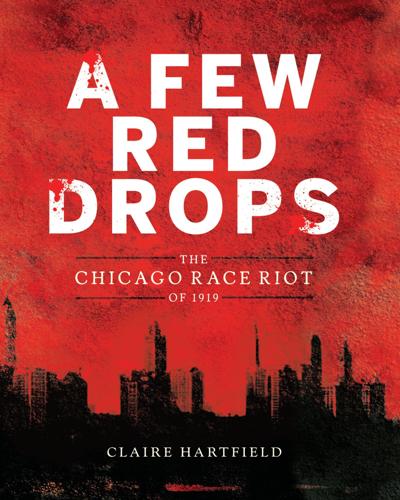
A Few Red Drops: The Chicago Race Riot of 1919
by
Claire Hartfield
Published 1 Jan 2017
As trainload after trainload of black strikebreakers from the South rolled into the Stock Yard, they were met with violent anger. At regular intervals along the way, white strikers and their families stood along the train route and heaved barrages of stones and bricks. The strikers were consumed with hatred—not limited to strikebreakers but directed at blacks as a race. Strikebreakers were safe inside the Yard, but those who journeyed beyond the Great Gate at day’s end walked into danger. Mobs of strikers massed for attack, usually launching a hail of stones followed by a melee of fists and kicks. White strikebreakers were sometimes attacked, but blacks were the focus of the most vicious fury.
…
The rocks on the ground might have been used later against the strikebreakers. Strikers idled in bars around the Yard, staring out the window at the steady stream of men and women the packers were bringing in. It started with local residents. A few days later, trainloads of out-of-towners were being deposited at the Great Gate of the Union Stock Yard. Many had the familiar look of newly arrived immigrants. Most visible, and most upsetting to the strikers, were the groups of blacks up from the South. The stories of the black strikebreakers died with the men who lived them, never recorded for future generations.
…
Michael Donnelly organized the packinghouse workers and led the 1904 strike. Under cover of darkness, a wagon driver approached the Yard, hauling a load of mattresses for delivery to Swift & Company. With his workers on strike, Swift was preparing to bring in outsiders to take their place and to provide the strikebreakers with temporary sleeping quarters inside the Stock Yard. This tactic was commonly used by industrialists to combat strikes and was well-known among laborers. Out of the silence, nearby saloons sprang to life, disgorging hundreds of strikers who blocked the roadway, overturning the cart and dragging the driver away.
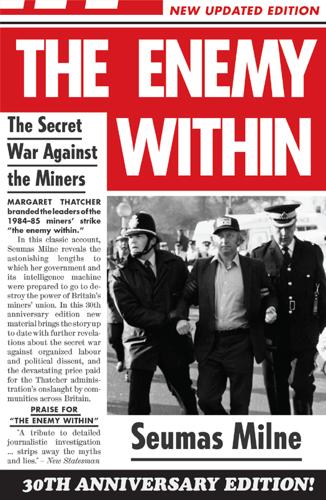
The Enemy Within
by
Seumas Milne
Published 1 Dec 1994
Once again, we were in a world where miners’ flying pickets were ‘storm troopers’ and ‘hit squads’ and their leaders’ tactics a ‘blitzkrieg’ (all terms used in the commentary on a Channel Four television documentary about the strike, When Britain Went to War, broadcast in 2004); where Arthur Scargill, not Margaret Thatcher, was to blame for the shutdown of the coal industry and the hardships of the miners (who bafflingly still elected and re-elected him); where the miners’ cause was ‘futile’ – but would nevertheless have surely been won if only the NUM leadership had called a national ballot or strikers had not fought running battles with strikebreakers and the police. It was the same story at the time of the twenty-fifth anniversary. From Thatcher’s close ally Norman Tebbit, who recalled the strike as a ‘war on democracy’, to the former Labour leader Neil Kinnock, who was still denouncing the miners’ leaders’ ‘madness’, to the BBC broadcaster Andrew Marr, who blamed Scargill’s ‘incompetence’ for coal’s early demise, an Alice-in-Wonderland consensus stretched across the media mainstream.
…
As far as the Thatcherite faction in the Cabinet and their supporters in the security services were concerned, the NUM under Scargill’s stewardship was the most serious domestic threat to state security in modern times. And they showed themselves prepared to encourage any and every method available – from the secret financing of strikebreakers to mass electronic surveillance, from the manipulation of agents provocateurs to attempts to ‘fit up’ miners’ officials – in order to undermine or discredit the union and its leaders. It is a record of the abuse of unaccountable power which would later return to haunt both those who pulled the strings and those who carried out the orders.
…
In a blurred film clip picked up from a Libyan broadcast, the bespectacled and bearded NUM chief executive officer was revealed to all, locked in an embrace with the ‘mad dog of Tripoli’, Colonel Gaddafi. It was 28 October 1984, nearly eight months into the year-long miners’ strike and three days after a High Court judge in London had ordered the seizure of the NUM’s assets. The same morning, the Sunday Times – closest of all the Tory newspapers to the government’s strikebreaking strategists – had run an exclusive front-page exposé, recounting in extraordinary detail Windsor’s furtive trip to the Libyan capital a week before in the company of Altaf Abbasi, the ‘European representative of a Libyan-backed Pakistani terrorist group’. The cash-hungry NUM, it appeared, had been caught with its trousers down.
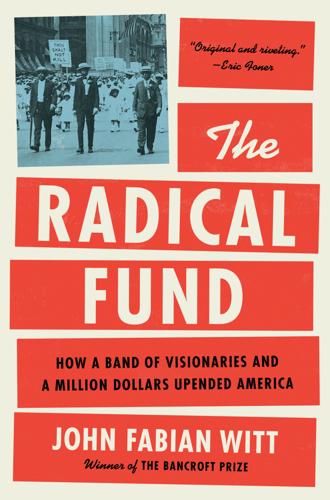
The Radical Fund: How a Band of Visionaries and a Million Dollars Upended America
by
John Fabian Witt
Published 14 Oct 2025
In 1899, strikers in Idaho dynamited an ore mill employing scab labor and wrecked a train carrying strikebreakers, leading Governor Steunenberg to call on President McKinley to send federal troops. Martial law in the state led to the arrests of 1,200 striking miners. A few years later Haywood shot a deputy three times while defending himself in a Denver brawl. Another Western Federation officer shot and killed two strikebreakers and was sentenced to life in prison. Dozens of deaths arose out of the infamous conflict known as the “Labor Wars” in Colorado in 1903 and 1904, including sixteen strikebreakers who died when the cage in which they were riding mysteriously fell in a deep mining shaft.
…
All told, 20,000 people settled into makeshift canvas homes to spend a desolate winter on $6 a week in union-provided strike relief, less than half a miner’s wages.17 Tensions between strikers, mine guards, and strikebreaking miners produced violence from the very start of the strike, especially at the largest and most important tent city at a railroad junction called Ludlow. Miners gathered at the Ludlow junction to watch would-be strikebreakers pass toward the CF&I mines and discourage them from doing so. Rumors abounded that the union was arming for battle. For its part, CF&I hired private detectives, who engineered an early armored car with a machine gun, which they called the “death special.”
…
Wells quickly compiled a record of the atrocities, which she published as The East St. Louis Massacre: The Greatest Outrage of the Century. At Carnegie Hall, in an event to celebrate the Russian ambassador, Theodore Roosevelt and Samuel Gompers nearly came to blows when Gompers blamed the events in East St. Louis on employers and Black strikebreakers. The former president accused the labor leader of offering excuses “for the murder of women and children in our own country” and condemned the “appalling outbreak of savagery.”53 * * * What had produced the worst race riot in two decades? At first, Baldwin (like Gompers) blamed industrial interests, namely the elites who had controlled the bridges over the river.
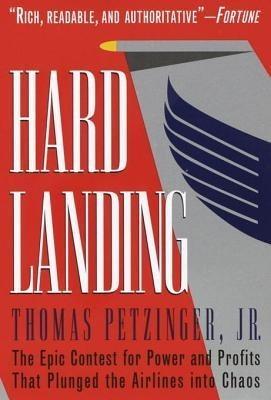
Hard Landing
by
Thomas Petzinger
and
Thomas Petzinger Jr.
Published 1 Jan 1995
Little was spared in the way of moral suasion and professional pressure. There was another element, more discreet, in the campaign to keep the newly hired pilots from crossing. Some of the pilots who had been hired to train the strikebreakers were themselves on strike—at Continental Airlines. From the outside it appeared a case of union hypocrisy, strikers training strikebreakers. But Continental strikers were acting as double agents, a kind of fifth column within United. Some, when they weren’t conducting sessions on flap settings and engine speeds, were making small talk—about what Lorenzo had done to the pilots at Continental, about the ideology of the confrontation at United, about the importance of refusing to fly the very equipment that the recruits were being trained to operate.
…
Byrne, WSJ, May 20, 1985; “Pilots Go on Strike at United,” by James Warren and Carol Jouzaitis, Chicago Tribune, May 17, 1985. 71. lodging the strikebreakers: ALPA’s countertraining operation in Denver was described in the Babbitt 8/26/94 interview and the Higgins 6/8/94 interview. 72. “nuclear reactor”: Babbitt 8/26/94 interview. 73. double agents: Higgins 6/8/94 interview. 74. Haas … expressed reservations: Zeeman 7/23/93 interview; Ferris 6/7/94 interview. 75. Six showed up: Byrne, WSJ, May 20, 1985. 76. 30 management pilots: Ibid. 77. Twenty-four-hour security: Ferris 5/27/93 interview. Ferris also described the acts of intimidation against strikebreakers. 78. “I am the chairman”: Quoted in “ ‘Friendly Skies’ Now Cloudy,” by Carol Jouzaitis and Gary Washburn, Chicago Tribune, June 23, 1985. 79.
…
And as they cried still more, “It dawned on me: What was coming to the fore in their minds was, ‘I’m not worth what I’m paid.’… We’re telling them, ‘There’s someone out there who’s willing to do your job at half the price.’ ” In the end, as they watched the company training every secretary in corporate headquarters to act as a strikebreaker, flight attendants making $30,000 a year decided that they would stay on the job and allow American to hire future flight attendants at about $15,000 a year. With his b-scales firmly in place, Crandall in early 1984 began unleashing orders for hundreds of new airplanes. Pilots, mechanics, and flight attendants flooded into American.
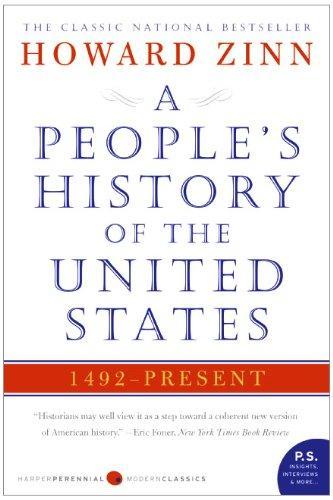
A People's History of the United States
by
Howard Zinn
Published 2 Jan 1977
Work in New Orleans came to a stop. After three days—with strikebreakers brought in, martial law, and the threat of militia—the strike ended with a compromise, gaining hours and wages but without recognition of the unions as bargaining agents. The year 1892 saw strike struggles all over the country: besides the general strike in New Orleans and the coal miners’ strike in Tennessee, there was a railroad switchmen’s strike in Buffalo, New York, and a copper miners’ strike in Coeur d’Alene, Idaho. The Coeur d’Alene strike was marked by gun battles between strikers and strikebreakers, and many deaths. A newspaper account of July 11, 1892, reported: . . .
…
Now the state went into action: the governor brought in the militia, armed with the latest rifles and Gatling guns, to protect the import of strikebreakers. Strike leaders were charged with murder; 160 other strikers were tried for other crimes. All were acquitted by friendly juries. The entire Strike Committee was then arrested for treason against the state, but no jury would convict them. The strike held for four months, but the plant was producing steel with strikebreakers who were brought in, often in locked trains, not knowing their destination, not knowing a strike was on. The strikers, with no resources left, agreed to return to work, their leaders blacklisted.
…
The death list of miners grew, but they hung on, drove back an armored train in a gun battle, fought to keep out strikebreakers. With the miners resisting, refusing to give in, the mines not able to operate, the Colorado governor (referred to by a Rockefeller mine manager as “our little cowboy governor”) called out the National Guard, with the Rockefellers supplying the Guard’s wages. The miners at first thought the Guard was sent to protect them, and greeted its arrivals with flags and cheers. They soon found out the Guard was there to destroy the strike. The Guard brought strikebreakers in under cover of night, not telling them there was a strike.
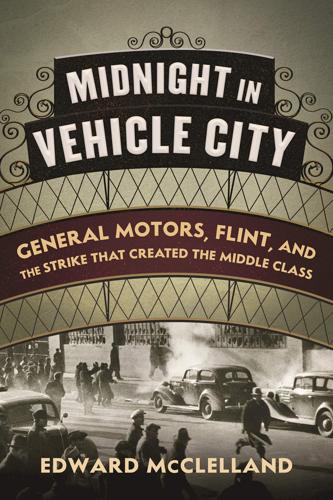
Midnight in Vehicle City: General Motors, Flint, and the Strike That Created the Middle Class
by
Edward McClelland
Published 2 Feb 2021
During an evening discussion at the apartment Governor Murphy shares with his brother and sister, Lewis questions the legitimacy of Judge Gadola’s injunction: “It is not the law, it is General Motors law. That injunction was written by John Thomas Smith in General Motors’ offices and signed by Judge Gadola, in his court. That is General Motors’ strikebreaking law. I am against strikebreakers. I don’t care who breaks this strike, whether it is General Motors or Judge Gadola or the president or you, Governor Murphy. I simply say I am against strikebreakers.” Lewis, himself a national figure, senses Murphy’s desire to raise himself to the same rank. He cannily plays on Murphy’s aspirations for higher office—even the presidency. “I had an impression,” Lewis tells the governor during a later break in the negotiations, “that Frank Murphy was a man of ambition.
…
Believing that unions are a “natural and good” institution in an industrial economy, Perkins convenes a conference of seventy-five labor leaders during her first year in office, and regularly attends AFL meetings. In one of Perkins’s first crises as secretary, she faces a situation similar to what Murphy is facing in Flint. During a violent longshoreman’s strike in San Francisco in the summer of 1934, police kill unionists who are trying to prevent strikebreakers from moving goods out of the port. In response, workers all over the city walk off the job. San Francisco grinds to halt. Roosevelt is in the Pacific, touring the Third Fleet. Secretary of State Cordell Hull, running the government in the president’s absence, wants to deploy federal troops stationed at the Presidio.
…
Even more union negotiators are on their way to Washington, where they will remain until General Motors agrees to meet with them, Lewis declares. What Lewis says next, though, ensures that no such meeting will take place. “Both sides will remain armed until there is a settlement,” he says. “We will keep the strikers in the plants and General Motors can keep its detectives, guards, strikebreakers, clubs and tear gas.” Lewis knows how to get Sloan’s goat. In fact, he loves to impersonate the straight-laced Sloan for reporters, after hours and off the record. He knows Sloan is uptight about having to negotiate with the workingmen who are occupying his company’s plants. As Sloan sees it, he has the law on his side, and the government’s duty is to enforce the law, so he shouldn’t have to be truckling with radical New Dealers just to get his property back.
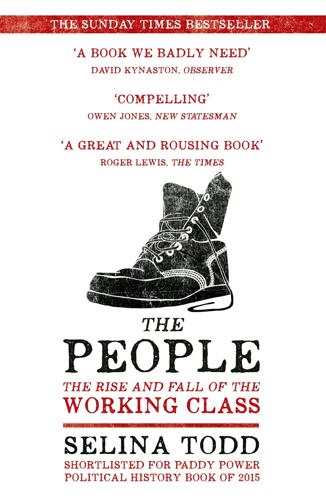
The People: The Rise and Fall of the Working Class, 1910-2010
by
Selina Todd
Published 9 Apr 2014
Little wonder that in many mining villages the strikebreakers of 1926 were still social pariahs decades later.42 One consequence was an increase in the working-class vote for Labour. Despite the lukewarm backing of the Labour front bench, local Labour Party branches had shown great solidarity with the strikers. Labour’s support had not increased in municipal elections since 1920. But in 1926, for the first time, Labour won control of several important municipal councils, including Glasgow and Sheffield.43 Alf Canning, the eighteen-year-old strikebreaker from Bristol, was among these new Labour supporters.
…
During May 1926 George enjoyed his work at the local power plant because of the camaraderie and the feeling of heroism it inspired: ‘we were keeping the power plant going! … We were so proud of what we were doing!’17 For people used to being treated as socially inferior, being honoured as patriots was a heady experience. Other working-class strikebreakers were hungry for work. In Bristol, eighteen-year-old Alf Canning, a bus conductor, stayed at work when others struck. His father, a labourer, was ‘non-union I suppose’ and told Alf to keep his head down. Alf’s seven brothers and sisters relied heavily on his wage, and in 1926 ‘if you had a job you was doing well’.
…
With so many people desperate for work in Bristol, Alf and his colleagues ‘had to be careful in all ways; you could be victimized if they didn’t like the colour of your eyes.’18 In several cities, unemployed young men were among those who volunteered, primarily in order to earn a few shillings, though some of them also expressed a conservative patriotic fervour. In Glasgow strikebreakers included members of the Billy Boys, a violent Protestant street gang who provided protection for local Conservative Party meetings throughout the 1920s and 1930s.19 But most of the volunteers came from far more privileged backgrounds. Some, like Mary Chitty, a wealthy student at Girton College, Cambridge, believed that the strikers were dangerous revolutionaries – ‘after all, the Russian Revolution was quite young’20 – while others had some sympathy with the strikers’ plight.
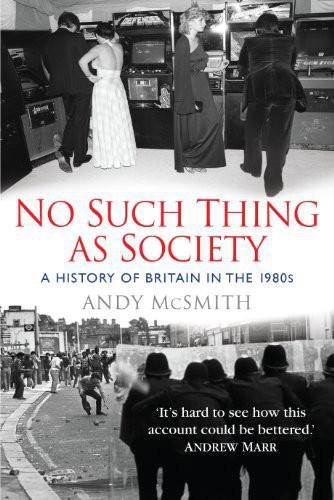
No Such Thing as Society
by
Andy McSmith
Published 19 Nov 2010
In Wales, a small number of miners had filtered back to work, creating huge resentment among those still on strike. There, as in England, the resources of the state were liberally expended in protecting and encouraging strikebreakers and, allegedly, in acts of provocation. One miner’s wife was walking home in the dark in the little town of Abertillery, when a van pulled up ahead of her. ‘I could hear the voices of the men shouting “Slut, prostitute!” . . . When I got alongside the van, it was full of policemen,’34 she claimed. One strike-breaker was David Williams, from Rhymney, who worked at the Merthyr Tydfil coalfield six miles from his home. Each morning, a taxi called at his door and he was driven to work along the A465, accompanied by two police cars and a motorcycle outrider.
…
They were travelling vast distances day after day, discovering allies and enemies in the most unlikely places: friendly Hindu communities in Birmingham, hostile steelworkers in Newport; magnificently supportive farmers in the wilds of Dyfed and hostile city councillors in the chambers of Cardiff.15 No time was wasted bussing in police officers to protect the strike-breaking miners and make sure that they could get past the picket lines unhindered. The strike formally began on Monday, 5 March. By Wednesday, 3,000 police from seventeen forces were at the pitheads and other locations around the East Midlands. The government was not going to be taken by surprise as it had been in 1972, when 800 police officers assigned to keep the Saltley coke depot open faced the sudden appearance of 25,000 miners, organized by Scargill.
…
No great effort seems to have been put into finding the killer; Jones’s death merited one sentence in the minutes of the directors of the North Notts Mining Board.18 However, his funeral, on 23 March, attracted a procession half a mile long. Two days later, Ian Tarren, a twenty-five-year-old miner who had not joined the strike, hanged himself at home in Peterlee, County Durham, allegedly after being taunted for being a ‘scab’.19 Another strikebreaker, James Clay, committed suicide in June, allegedly after threats to his twelve-year-old daughter. Contrary to what is oft en claimed, the only miner recorded as having died on a picket line was Joe Green, a sixty-year-old miner who was crushed by an articulated lorry outside the Ferrybridge power station on 15 June, although two South Wales miners died in an accident on their way to a picket line.
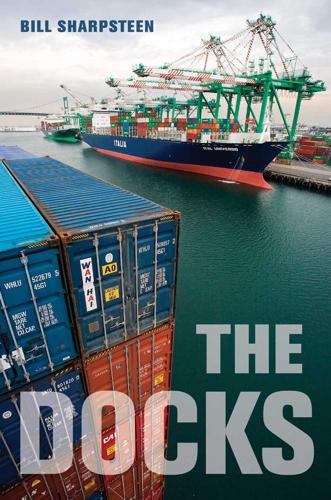
The Docks
by
Bill Sharpsteen
Published 5 Jan 2011
For a short time, at least, West Coast ports stayed relatively calm, a product of the solidarity that Bridges preached; the major docks shut down all along the West Coast because longshoremen refused to cross the picket lines. The one exception was San Pedro, where the employers hired thousands of strikebreakers—known as scabs—and formed their own union, the Longshoremen’s Mutual Protective Association of Los Angeles and Long Beach. Unwilling to recognize this latest company union as anything but a front for scabs, the thirteen hundred striking longshoremen at the two ports often became violent enforcers, doing what they could to prevent the strikebreakers from usurping their jobs. In some ways, it was incredibly well organized mayhem. Picket captains selected groups of five or six men to drive to a recruiting office run by the Merchants’ and Manufacturers’ Association in the Rosslyn Hotel in downtown Los Angeles.
…
Later union accounts further toned down the incident into one starting out as “a peaceful demonstration.” In any case, it is clear that a group of strikers, possibly as many as three hundred by the Times’ estimate, showed up where the scabs were staying. According to an article in the Nation, six hundred special cops and private strike-breaking guards showed up and attacked the strikers. Dick Parker, a twenty-year-old longshoreman who had joined the ILA only a few hours before, was shot through the chest by a guard, and Joe Stahl saw John Knudsen take a bullet as well. Ray Salcido, one of the first Mexicans to work on the docks, heard Parker say, “Ray, I’m shot,” and Salcido carried him out of the tent.
…
Stories in the San Francisco Daily News depicted a morality play of sorts in which the longshoremen—most often referred to as rioters—received a suitable punishment for their attacks on the port and the police protecting it. More sympathetic, prolabor accounts characterized the strikers’ actions as purely defensive, even heroic, and described the cops as overly aggressive tools of the employers. The battle began early, at 8:00 a.m., after a Belt Line locomotive driven by strikebreakers shunted two refrigerator cars into the Matson docks at piers 30 and 32. According to the Daily News, the pickets—a crowd of about two thousand—protested this by setting two boxcars on fire. The police reacted with tear gas, vomiting gas, and gunfire. At one point, so much ammunition was released that workers on the construction site of the San Francisco–Oakland Bay Bridge had to run for cover lest they stop a stray bullet.

Evil Geniuses: The Unmaking of America: A Recent History
by
Kurt Andersen
Published 14 Sep 2020
In the years right after the 1981 strike, companies all over the country made and remade the point again and again—big strike, strikebreakers brought in, national press attention, strike continued and disastrously failed, unions dissolved or rendered impotent. And the old Mackay Doctrine, which had sat on a back shelf for half a century, let them. One of the big American mining companies realized that the moment for good-old-days antiunion ferocity had returned: a year after a strike began in Arizona and the company replaced striking copper miners with strikebreakers, its workers all over the Southwest were persuaded to do away with their unions.
…
In 1975 the two hundred pressmen wouldn’t come to terms and went on strike, and the other blue-collar unions at the Post went on strike in solidarity, as unions are supposed to do. On their way out, some of the pressmen sabotaged some of the presses, a major strategic error. Quite a few of the nonunion strikebreakers whom management hired to replace the (white) strikers were black, a brilliant strategic decision. And absolutely key to how it played out was the behavior of the Post’s journalists. Just as the recent exposure of the secret Pentagon report on Vietnam and Nixon’s crimes had been game-changing work by journalists with the essential support of management, the crushing of the strike and pressmen’s union, also game-changing, was the work of management with the essential support of journalists.
…
Three years later, in 1938, the Supreme Court ruled that the Mackay Radio & Telegraph Company had broken that law after a strike by refusing specifically to rehire its organizers—but the court’s decision also said, in passing, that not only were companies free to hire replacement workers during strikes but that after a strike ended, companies were free to keep employing the strikebreakers. The strikers’ only right was to be rehired for any additional jobs that might open up soon. The logic of that Mackay Doctrine, that strikers aren’t technically fired if they’re replaced by scabs, is absurd. Despite that 1938 decision, the American norm that emerged out of the New Deal was that for companies to replace striking workers was unacceptably unfair—a norm that remained in force until its spectacular de facto repeal by Reagan during the air traffic controllers’ strike.
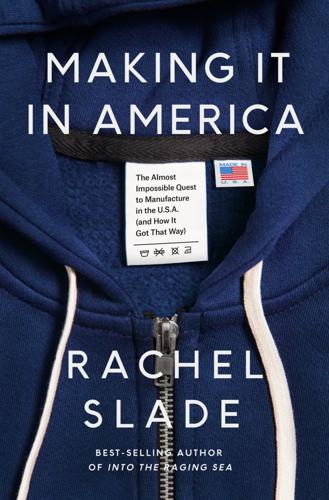
Making It in America: The Almost Impossible Quest to Manufacture in the U.S.A. (And How It Got That Way)
by
Rachel Slade
Published 9 Jan 2024
Barbara Kopple’s film, Harlan County U.S.A., would end up covering the thirteen-month-long strike, interspersed with shots of Boyle’s trial. Her powerful film also revealed how the women in the community came together to support the men. While the miners struck, their wives, mothers, and daughters organized, waking before dawn to block the road with their bodies to prevent the company from trucking in strikebreakers, and rallying the community to support each other. One particularly moving segment captured the performance of Florence Reece, a coal miner’s daughter born in 1900, who had written the famous union song “Which Side Are You On?” during the Harlan County War in 1941, a song that Pete Seeger would later make famous.
…
Reece then adjusted her glasses and began to sing in a gravelly voice seasoned by years of toil and heartache: “My daddy was a miner/And I’m a miner’s son/And I’ll stick with the union/’Til every battle’s won/Don’t scab for the bosses/Don’t listen to their lies/Us poor folks haven’t got a chance/Unless we organize.” All that autumn, Harlan County simmered with the threat of violence; when strikebreaking vigilantes began openly wielding guns, strikers responded in kind. The tension was palpable. One morning, nearly a year into the strike, a young miner was murdered in a predawn scuffle with hired agitators. After his death, Duke finally agreed to work with the miners’ union leadership. In the midst of the Harlan strike, Tony Boyle was sentenced to three consecutive life prison terms for the murder of the Yablonski family.
…
In America, captains of industry frequently exploited race and gender differences to splinter the workforce into fearful, angry sects, driving wedges between rich and poor, native and immigrant, urban and rural, white and Black and Indigenous. Black workers in particular were used over and over again as strikebreakers to reinforce the divide.[*2] Exploit differences—divide and conquer the workforce, pit white workers against Black, immigrant, and female workers. Who took your job? This Black man, that Syrian, this Italian, that Jew. Why are we cutting your paycheck? Because all these foreigners are driving down wages.
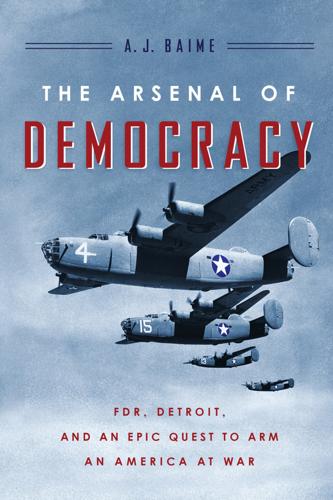
The Arsenal of Democracy: FDR, Detroit, and an Epic Quest to Arm an America at War
by
A. J. Baime
Published 2 Jun 2014
Cars with license plates from states all over the Midwest thundered into the Rouge parking lot, carrying bruisers with baseball bats and iron rods. Harry Bennett was ready for them. The morning of the strike, union picketers barricaded the three main entrances leading in and out of the plant. Groups also blockaded tunnel-ways and railroad tracks. No one could come in or out. Inside the factory, Bennett organized a group of 2,500 black strikebreakers. They were armed with knives, hand-sharpened metal rods, and badges saying 100% FOR FORD. Bennett had promised them they would be “paid around the clock” if they refused to exit the Rouge. For months he had recruited aggressively among the black community for his Service Department. Two-thirds of the black laborers in Detroit worked for Henry Ford.
…
Ford wanted to fight the thing out,” Bennett later recalled. “He told me to arm everyone we had in the plant, and use tear gas if necessary.” Edsel was in Florida on a brief trip, trying to regain his health. He got word of the strike by phone and jumped on the first plane he could, bound for Detroit. As the sun went down, the 2,500 strikebreakers locked inside the Rouge began to grow hungry and terrified for their lives. Union men were hurling stones through windows. Bennett and Henry monitored the situation from afar. An executive named Mead Bricker showed up in a panic. People were brawling outside the Rouge gates, he panted. It was black against white, and entirely out of control.
…
“Van Wagoner became very agitated,” according to Bennett, “and seemed incapable of coherent speech.” For ten full days the strike wore on, until the Governor brokered a settlement. Henry agreed to discussions with the United Auto Workers—to come to the negotiating table and nothing more. “We’ll bargain until hell freezes over,” said Bennett. “But they won’t get anything.” When the black strikebreakers left the Rouge under police protection, federal investigators headed in to survey the damage. The next morning Edsel awoke and heard on the radio that his father had caved to the UAW. Bennett had signed the contract, agreeing to all the union’s demands. It was over. Edsel was dumbfounded. He rushed to the Willow Run construction site to find Sorensen.
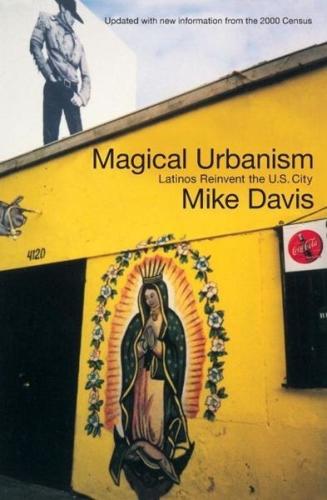
Magical Urbanism: Latinos Reinvent the US City
by
Mike Davis
Published 27 Aug 2001
.^^ a transnational police state along the border has been reinforced by President Zedillo's sweeping deployment of the Mexican army in open contempt of the tution to conduct arbitrary searches of civilians and way mount checkpoints. Mexican law was also violated in 1998 more than 100 elite "Special consti- high- when Forces" police were used to herd strikebreakers through picket lines at a Tijuana feeder plant for Hyundai Motors. The government's first strike by a genuinely iron-fisted response to the independent maquiladora union may prefigure a violent future for industrial relations along the border. In the neoliberal Utopia of the border economy capitalized Mexico's catastrophic national level of unemployment, wages bear little on real or no relationship to workers' productivity or their cost of living.
…
the Perez Bonillas, like Guanajuatenses in the United Dallas, accused of the and ethnic hatred wealthy, conservative suburbs of southern The Penuelases and in the case will a small Los Angeles a village of farmers mobile army of gardeners, and housekeepers - to San Clemente, the "Spanish Vil- FABRICATING THE "BROWN PERIL" lage by the Sea" founded by Seattle's strikebreaking 69 former mayor Ole Hanson in the early 1920s. Most Americans remember the home it of Dick Nixon's "Western White House." Elena Penuelas, who works as a maid, recalled her first view of the famous red-tiled roofs of ^tix-Spanish San Clemente: looked as like paradise . . . the seen."
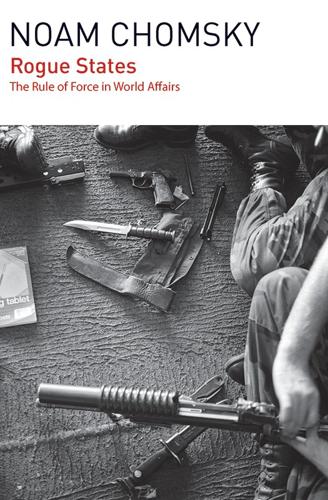
Rogue States
by
Noam Chomsky
Published 9 Jul 2015
The latter right is technically upheld in the United States, though legal and administrative mechanisms ensure that it is increasingly observed in the breach. By the time the Reaganites had completed their work, the US was far enough off the spectrum so that the International Labor Organization, which rarely criticizes the powerful, issued a recommendation that the US conform to international standards, in response to an AFL-CIO complaint about strikebreaking by resort to “permanent replacement workers.”46 Apart from South Africa, no other industrial country tolerated these methods to ensure that Article 23 remains empty words; and with subsequent developments in South Africa, the US may stand in splendid isolation in this particular respect, though it has yet to achieve British standards, such as allowing employers to use selective pay increases to induce workers to reject union and collective bargaining rights.47 Reviewing some of the mechanisms used to render Article 23 inoperative, Business Week reported that from the early Reagan years, “US industry has conducted one of the most successful anti-union wars ever, illegally firing thousands of workers for exercising their rights to organize.”
…
The complaint was upheld by the US National Labor Relations Board, which ordered trivial penalties after years of delay, the standard procedure. The NAFTA study, by Cornell University Labor economist Kate Bronfenbrenner, was authorized for release by Canada and Mexico, but delayed by the Clinton administration. It reveals a significant impact of NAFTA on strikebreaking. About half of union organizing efforts are disrupted by employer threats to transfer production abroad, for example, by placing signs reading “Mexico Transfer Job” in front of a plant where there is an organizing drive. The threats are not idle. When such organizing drives nevertheless succeed, employers close the plant in whole or in part at triple the pre-NAFTA rate (about 15 percent of the time).
…
The latest economic report of the president also takes great pride in the fairy-tale economy, which it attributes to “significant wage restraint” that results from “changes in labor market institutions and practices.”11 That translates into English as things like non-enforcement of laws on illegal strike-breaking, allowing permanent replacement workers—the US has been cited by the ILO for that, but nobody pays any attention. And there are other factors in the fairy tale. Caterpillar, the construction producer, won a major strike in Illinois, seriously harming one of the major unions, United Auto Workers.
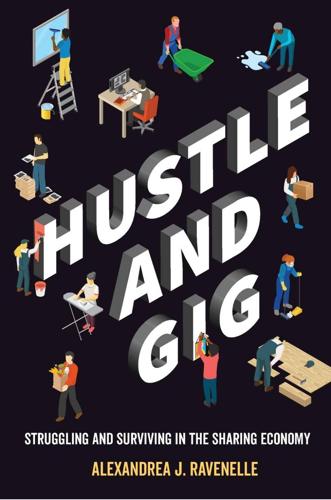
Hustle and Gig: Struggling and Surviving in the Sharing Economy
by
Alexandrea J. Ravenelle
Published 12 Mar 2019
Assisted by the United Mine Workers Union, the workers took up residence in tents in the local hills and continued their strike, even as the Baldwin-Felts Detective Agency attacked with Gatling guns and rifles. Eventually the National Guard was sent in, its wages supplied by the Rockefellers. The guardsmen brought in strikebreakers (not telling them that there was a strike) and beat and arrested miners by the hundreds. They also utilized a “death special,” an improvised armored car that would periodically spray machine-gun fire. On April 20, 1914, in the mining town of Ludlow, two National Guard companies began a machine-gun attack on a tent colony of twelve hundred men, women, and children.
…
Then, in 1938, President Roosevelt signed into law the Fair Labor Standards Act, which banned oppressive child labor, set the minimum hourly wage at twenty-five cents and the maximum workweek at forty-four hours (later shortened to forty hours under the Fair Labor Standards Amendments of 1966).23 The Wagner Act was challenged by steel corporations, but the Supreme Court found it to be constitutional on the basis of the federal government’s right to regulate interstate commerce, which was hurt by strikes. In 1936, rank-and-file workers developed the idea of a “sit-down” strike, where they sat down on the job and refused to leave. The sit-down made it harder for strikebreakers to be moved in, helped keep workers unified, and provided more pleasant conditions than marching outside. The sit-downs were especially popular: 477 such protests in 1937 alone.24 In these grassroots strikes, involving union leadership was often seen as an afterthought, and local unions were often not aware that a strike was brewing until one was well under way.
…
See also class issues social media, 29–30, 52 social safety net, 94, 177, 180, 187 Social Security/Medicare taxes, 74, 94, 189, 191, 196, 233n52 Spotify, 30 spot market, 37 Sprig, 33 Standing, Guy, 37 Stansell, Christine, 68 start-up expenses, 2, 19, 19–20, 81, 222–23n64 start-ups, tracking of, 76 status: as gig economy worker, 32, 160–61, 180; as temporary workers, 180 Stevenson, Howard, 36 stigma, 32, 160–61 Stone, Pamela, 184 stopgap measures, 10 stratification of labor, 174–75, 186 street meat, defined, 229n27 strikebreakers, 68–69, 70 strikes: deregulation and, 178; during Great Depression, 70; in mining industry, 68–69; sit-down strikes, 70; in textile industry, 67, 224n12; train strikes, 68; Treaty of Detroit and, 177 Strivers: overview, 10–12; age issues, 62; Airbnb hosts, 132; Amy, 12–13; Ashley, 14–15; challenges of, 23, 25; hosts as, 166, 183; portable benefits plan, 202, 203; sharing economy problems and, 192–93; vulnerability of, 195; worker safety and, 100 Strugglers: overview, 10–12, 23; age issues, 62; Airbnb hosts, 132; Ashley, 14–15; challenges of, 23, 25; client response rates and, 84; Donald, 61–64; fear and, 11, 17; gig economy and, 15–18; hosts as, 166; Lyft case study, 2–3; middle-wage workers, 219n12; portable benefits plan, 202, 203; TaskRabbit case study, 1–2, 3–5; TaskRabbit worker, 1–2; Uber case study, 2–3; vulnerability of, 195; worker safety and, 100 student loan debt, 9, 62 StumbleUpon, 223n75 Success Stories: overview, 10–12, 23; age issues, 62; Amy, 12–13; appeal of, 11; challenges of, 23, 25; chefs as, 161–64; criminal activity and, 195; drivers as, 185; hosts as, 164–66, 183; middle-class living and, 39; portable benefits plan, 202; risks for, 18–19; Ryan, 19–21, 39; sharing economy problems and, 192–93; surplus of choices for, 156; Yosef, 131–32.
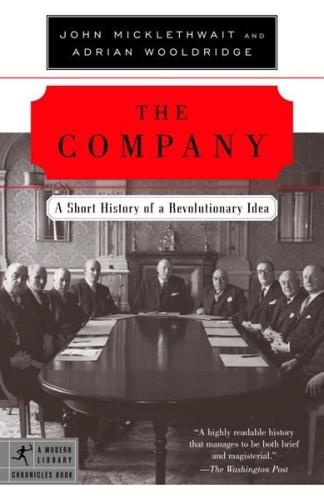
Company: A Short History of a Revolutionary Idea
by
John Micklethwait
and
Adrian Wooldridge
Published 4 Mar 2003
Frick duly built a three-mile-long stockade around the factory, complete with barbed wire, searchlights, and two hundred shooting holes for rifles. He also employed three hundred men from the Pinkerton detective agency to protect his strikebreakers. The workers won the first round, with the Pinkertons surrendering after a pitched battle, which claimed sixteen lives. But they lost the war. The governor sent in eight thousand state militia. Frick brought in strikebreakers, many of them blacks who were banned from joining the union, and smashed the strike. The Homestead strike, and the bloody Pullman strike of 1894, where the attorney general (a railroad shareholder, as it happened) intervened to declare that the American Railroad Union was “an illegal combination” under antitrust laws, showed the gulf between the power of capital and labor.
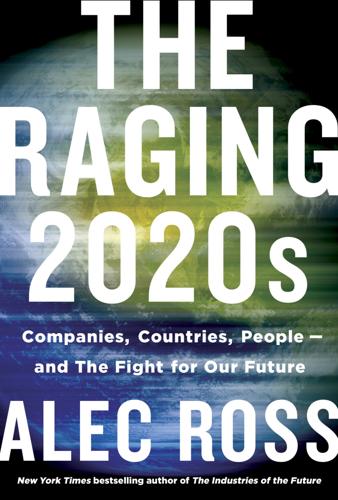
The Raging 2020s: Companies, Countries, People - and the Fight for Our Future
by
Alec Ross
Published 13 Sep 2021
An estimated one million rounds of ammunition were fired, and it took 2,100 army troops ordered in by the president to end the conflict. During these years my great-grandmother was sent away from the coal camp where she and my great-grandfather lived so that she could give birth to my grandfather away from the violence that was taking place as strikebreakers beat or shot anybody they thought might be sympathetic to the unions. Even as violent strikebreaking tactics fell out of favor in the late 1920s, companies went to great lengths to quash union activity. GM spent $1 million (more than $18 million in 2020 dollars) spying on workers’ union activities in the three years before the Flint sit-down strike.
…
See also Cold War; Russia fall of grain embargo against Spain Sri Lanka stakeholder capitalism calls for turn to Nordic countries and Standard Oil Stanford University Stanley, Vincent Stansbury, Anna Starbucks state power. See governmental power Stiglitz, Joseph stock buybacks Stoller, Matt Stone, Oliver strikebreaking strikes Stripe Summers, Larry surveillance China and democracy and regulation of sustainable practices Sweden Swift, Jonathan Switzerland Syria, civil war in T-12 Taibbi, Matt Tang dynasty Tao, Shawna Target TaskRabbit tax avoidance. See also tax evasion; tax havens Angola and cost of developing nations and.
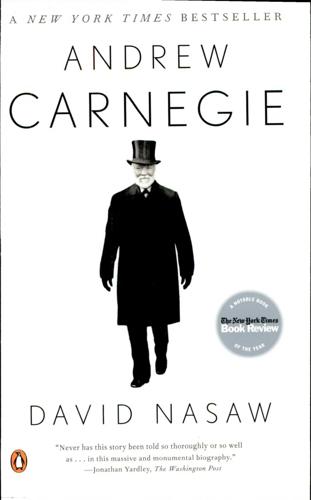
Andrew Carnegie
by
David Nasaw
Published 15 Nov 2007
On Sunday morning, April 22, three days after Jones had announced that he was reopening the rail mill, the people of Braddock awoke to discover that shortly past midnight, a small army of Pinkertons had arrived and now stood guard over the Edgar Thomson steelworks in preparation for Monday’s reopening. The Pinkertons had by 1888 established a well-deserved reputation as strikebreakers. The so-called Detective Agency had been founded by Allan Pinkerton, a Scotsman who had emigrated in 1842, just six years before Carnegie. Pinkerton at first provided guards for banks and businesses, then expanded his operation to guarding railroads against robberies. Beginning in 1866, the agency began providing armies of paid strikebreakers to coal companies and manufacturers who had the means to hire them. Because the Pinkertons had no ties to the communities they were sent into, they could and did act with brutal efficiency in protecting private property and breaking strikes.
…
Of course we have no recourse but to fight it through—am glad of it.”21 Abbott had already arranged for about one hundred Pinkertons to secure the works and had housed them in Pittsburgh until he needed them. They arrived armed and dangerous, a vigilante squad of outsiders, available to do the dirty work companies feared that local officials would be reluctant to take up. On July 10, with the Pinkertons in reserve, Abbott dispatched thirty-one strikebreakers by train to Homestead, accompanied by Sheriff McCandless, who had stood guard with his deputies between the Pinkertons and the Knights at Edgar Thomson the year before. The scabs were greeted by a crowd of some two thousand Homestead men, women, and children, who blocked the tracks leading to the steelworks.
…
Frick and Schwab had ended up at Homestead with a volatile mixture of scabs and “old men.” In May 1893, Schwab notified Frick that he had “decided to take a strong hand [and] investigate every squabble [between former strikers and scabs] whether it occurred in the town, or works, and deal with the guilty parties severely.” Union sympathizers who harassed strikebreakers on the job were discharged immediately. When such harassment occurred in the town, Schwab notified the police, who promptly arrested and fined offenders; they were then discharged from the plant. To make sure that Homestead remained non-union, the company would later hire internal spies to report on any organizing activity.
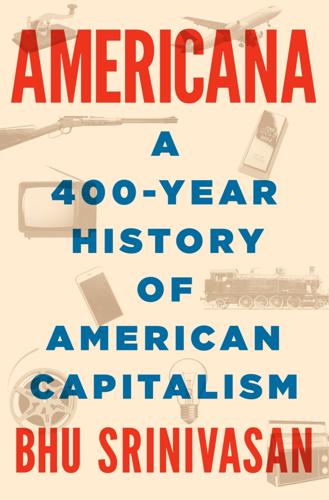
Americana: A 400-Year History of American Capitalism
by
Bhu Srinivasan
Published 25 Sep 2017
Rather than halting the spread of his men’s efforts to unionize, it spurred two unions, the United Metal Workers and the Knights of Labor, to enlist nearly all of his workers. Unable to come to terms with the unions, McCormick moved to temporarily shut down the entire factory, locking out his workers. Immediately McCormick set about looking for new men with whom to reopen the factory. With his strikebreakers, he reopened the factory with locked-out workers protesting outside. This maneuver, however, required escalated protection in the form of hundreds of Chicago policemen. Seeing the government firmly on the side of factory owners and property holders, the union men were vulnerable to the entreaties of the Anarchists and socialists who railed against the state.
…
The plan was to continue the action into Monday and beyond, forcing a full recognition of the eight-hour day throughout the nation. On Monday, May 3, the editor of Arbeiter-Zeitung, August Spies, spoke at a rally of Chicago’s lumbermen. His speech took place within a few hundred yards of the McCormick factory, which continued to operate with strikebreakers. A couple of hundred locked-out McCormick workers joined the crowd to hear Spies. As he spoke, the bells at the McCormick factory rang, signaling the end of the shift. The locked-out workers, frustrated after months of being out of work, took it as their moment for escalation. They rushed to confront the nonunion workers leaving work after their shift.
…
After a couple of preliminary overtures were met with resistance, Frick started fortifying the facilities in preparation for either a lockout or a strike “behind 11-foot-high fences, with portholes just large enough for guns to stick through,” along with “giant searchlights of 2,000-candlepower.” As the expiration date loomed, Frick’s strategy appeared to be to secure his plant, lock out the workers, and bring strikebreaking workers into Homestead. But Homestead was more than just a factory—it was a town of twelve thousand people. Families lived there. Understanding that this reality heightened the sensitivity of his workers, Frick contracted for a small private army. When the local police were not up to the task or were unavailable, industrialists often called upon Robert Pinkerton to send his “Pinkertons.”

Americana
by
Bhu Srinivasan
Rather than halting the spread of his men’s efforts to unionize, it spurred two unions, the United Metal Workers and the Knights of Labor, to enlist nearly all of his workers. Unable to come to terms with the unions, McCormick moved to temporarily shut down the entire factory, locking out his workers. Immediately McCormick set about looking for new men with whom to reopen the factory. With his strikebreakers, he reopened the factory with locked-out workers protesting outside. This maneuver, however, required escalated protection in the form of hundreds of Chicago policemen. Seeing the government firmly on the side of factory owners and property holders, the union men were vulnerable to the entreaties of the Anarchists and socialists who railed against the state.
…
The plan was to continue the action into Monday and beyond, forcing a full recognition of the eight-hour day throughout the nation. On Monday, May 3, the editor of Arbeiter-Zeitung, August Spies, spoke at a rally of Chicago’s lumbermen. His speech took place within a few hundred yards of the McCormick factory, which continued to operate with strikebreakers. A couple of hundred locked-out McCormick workers joined the crowd to hear Spies. As he spoke, the bells at the McCormick factory rang, signaling the end of the shift. The locked-out workers, frustrated after months of being out of work, took it as their moment for escalation. They rushed to confront the nonunion workers leaving work after their shift.
…
After a couple of preliminary overtures were met with resistance, Frick started fortifying the facilities in preparation for either a lockout or a strike “behind 11-foot-high fences, with portholes just large enough for guns to stick through,” along with “giant searchlights of 2,000-candlepower.” As the expiration date loomed, Frick’s strategy appeared to be to secure his plant, lock out the workers, and bring strikebreaking workers into Homestead. But Homestead was more than just a factory—it was a town of twelve thousand people. Families lived there. Understanding that this reality heightened the sensitivity of his workers, Frick contracted for a small private army. When the local police were not up to the task or were unavailable, industrialists often called upon Robert Pinkerton to send his “Pinkertons.”
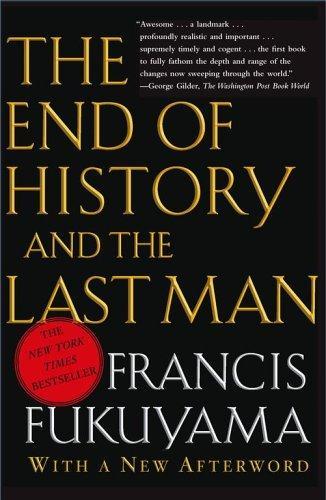
The end of history and the last man
by
Francis Fukuyama
Published 28 Feb 2006
The anger that arises in job disputes seldom has to do with the absolute level of wages, but rather arises because management’s wage offer does not adequately “recognize” the dignity of the worker. And this explains why strikers feel much more intense anger at a strike-breaker than at the management itself. Even though the strike-breaker is nothing more than a tool of management, he is despised as an abject person whose own sense of dignity was overwhelmed by his desire for immediate economic gain. Unlike the other strikers, the strikebreaker’s desire won out over his thymos. We readily understand economic self-interest, but frequently ignore the way it is intimately bound up with thymotic self-assertion.
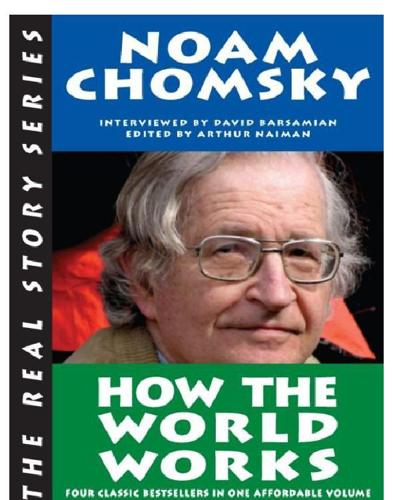
How the World Works
by
Noam Chomsky
,
Arthur Naiman
and
David Barsamian
Published 13 Sep 2011
In France, the threat of the political power and influence of the labor movement was enhanced by its steps to impede the flow of arms to French forces seeking to reconquer their former colony of Vietnam with US aid. So the CIA undertook to weaken and split the French labor movement—with the aid of top American labor leaders, who were quite proud of their role. The task required strikebreakers and goons. There was an obvious supplier: the Mafia. Of course, they didn’t take on this work just for the fun of it—they wanted a return for their efforts. And it was given to them: They were authorized to reestablish the heroin racket that had been suppressed by the fascist governments, the famous “French connection” that dominated the drug trade until the 1960s.
…
The Webb story is fundamentally correct, but the fact that the CIA has been involved in drugrunning has been well-known since Al McCoy’s work 25 years ago [in books like The Politics of Heroin: CIA Complicity in the Global Drug Trade]. It started right after the Second World War. You can follow the trail through the French connection in Marseilles (a consequence of CIA efforts to undermine unions by reconstituting the Mafia for strikebreaking and disruption), to the Golden Triangle in Laos and Burma, and on to Afghanistan, etc. Bob Parry and Brian Barger exposed a lot of the story ten years ago. Their evidence was correct, but they were shut up very quickly. Webb’s contribution was to trace some of the details and discover that cocaine got into the ghettos by a particular pathway.
…
decline of in the media New Deal-style libertarian society, impossibility of designing libraries Libya Lies of Our Times Likud Lincoln, Edward “linkage,” Lippmann, Walter Little Rock economic conference living standards, US foreign policy and Lockheed Lombard League (Spain) Long, Huey Lorenzo, Frank Los Angeles National Defense Highway System South Central Lula Luxemburg, Rosa Lyons, Louis M. MacNeil-Lehrer News Hour Madison, James Maechling, Charles Mafia CIA connection to as strikebreakers magic answer Mahdi, Ali “major surgery,” Making of the English Working Class malnutrition among children in US “managed” health care Mandate for Change Manifest Destiny Manufacturing Consent on Cambodia dedication to Carey film on five news filters on social purpose of media manufacturing dissent maquiladoras Marcos, Ferdinand marijuana Marines (US) “market discipline,” market system, deaths due to “market theory, really existing,” Markusen, Ann Marseilles Marshall Plan Martin Marietta Marxism as Chomsky’s childhood reading “class” seen as Marxist raving critique of Lenin Jefferson and Dewey as Marxists mainstream left Marxist analysis of racism Republican use of rhetoric systemic questions and traditional “vulgar, inverted,” Marxist priests Marx, Karl Massachusetts attitudes toward business in (former) corporations subsidized in organizers in Massachusetts Institute of Technology.
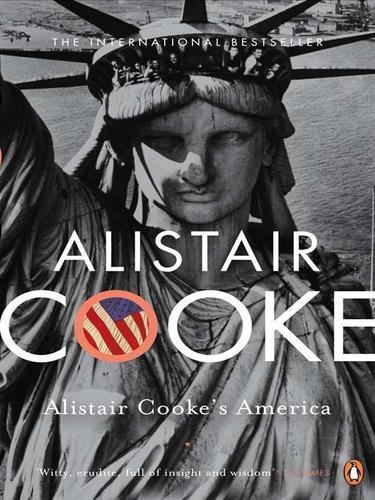
Alistair Cooke's America
by
Alistair Cooke
Published 1 Oct 2008
As he sat in his castle and looked out over the splendid hills and the still lochs, he liked to think of himself as a simple Scottish laird who had given to America more than he took. It wasn’t, however, a bad place to be when his steel workers – determined to organize in a union – were shooting it out with an army of strikebreakers hired by Frick. Carnegie was stung by the suggestion of a United States Senator from Indiana that he was ‘skulking in his castle,’ and, when the British press took him up on the killing and wounding at his Homestead plant, Carnegie made the mistake of publicly wallowing in self-pity. He swore he had received a telegram from his workers beginning ‘Kind master,’ and seeking to know only his wishes.
…
And while the Newport millionaires bent for rubies with their little sterling silver shovels, children in New York bent over sewing machines sixteen hours a day, for industry had produced something that was supposed, in the not so long ago, never to happen in America – a permanent factory population. It began to see itself as the slave of the trusts and the money men. In the year that the Vanderbilts threw open their golden doors, there was a coal miners’ strike, a national railroad strike, and a sweat-shop march, most of them aggravated by armies of strikebreakers and broken either by the state guard or by federal troops. But it was out on the prairie that the people felt most cheated and disheartened. They had gone out to realize the dream of free men and free soil. They had been conned, first by the railroads and their land grants, then by the farm machines and their makers.
…
The industrialists, the steel men, the iron and tin and railroad barons, came very easily to make the same large assumption about the inexhaustibility of cheap labor. But, as we have seen in Carnegie’s troubles with his workers, the immigrant did not stay cowed forever. Henry Frick, Carnegie’s bosom partner in his steel enterprises, was a fanatical opponent of labor unions, but he was quick to see that the latest wave of immigrants could be employed as strikebreakers. One year he employed Hungarians to break a strike. But within a year or two he had to hire Italians to break a strike of Hungarians, who by then were beginning to learn a specialty. In an irritable moment Frick got off a profound remark. ‘The immigrant,’ he complained, ‘however illiterate or ignorant he may be, always learns too soon.’
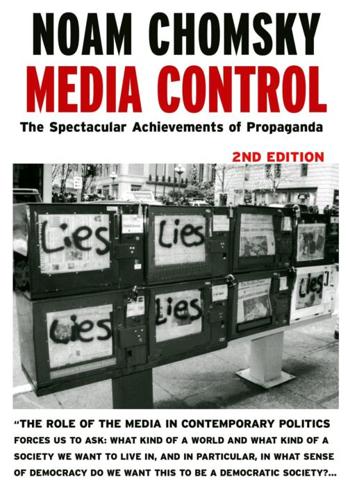
Media Control: The Spectacular Achievements of Propaganda
by
Noam Chomsky
Published 1 Jan 1974
A huge amount of effort was put into presenting it. This is, after all, the business community, so they control the media and have massive resources. And it worked, very effectively. It was later called the "Mohawk Valley formula" and applied over and over again to break strikes. They were called "scientific methods of strike-breaking," and worked very effectively by mobilizing community opinion in favor of vapid, empty concepts like Americanism. Who can be against that? Or harmony. Who can be against that? Or, as in the Persian Gulf War, "Support our troops." Who can be against that? Or yellow ribbons. Who can be against that?
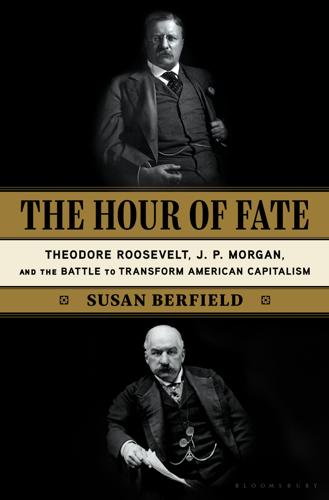
The Hour of Fate
by
Susan Berfield
He prevailed on the governor to call in eighty-five hundred National Guardsmen—armed with the latest rifles and two Gatling guns34—to retake the town and mill and protect strikebreakers. The troops remained in Homestead for three months. On July 23,35 Frick returned to his office in Pittsburgh after lunch with a friend. Alexander Berkman, a stern and single-minded anarchist, was waiting. Berkman wore a new gray suit, purchased with funds from his sometime lover, Emma Goldman. He posed as the head of a New York employment agency eager to supply Frick with strikebreakers. As soon as Berkman was admitted in, he drew a revolver, and fired three shots. The first two hit Frick’s neck and lodged in his shoulders, one bullet on the right, the other on the left.
…
Earlier that year, on Saturday, May 1—May Day—three hundred fifty thousand workers around the country went on strike to demand an eight-hour workday with no pay cut. In New York, twenty-five thousand people marched along Broadway carrying torches. Dramatic events in Chicago had rattled the whole nation. During the strike, the railroads were stalled, many businesses were unable to open and the stockyards were closed. The McCormick Reaper Works brought in strikebreakers, and police to defend them against the picketers. On May 3, as a crowd of strikers surged the factory gate at the end of the day, police fired. They wounded many and killed at least two. Anarchists printed handbills in English and German—“Revenge! Workingmen, to Arms!!! They killed the poor wretches, because they, like you, had the courage to disobey the supreme will of your bosses”—and called for a meeting at Haymarket Square the next evening.
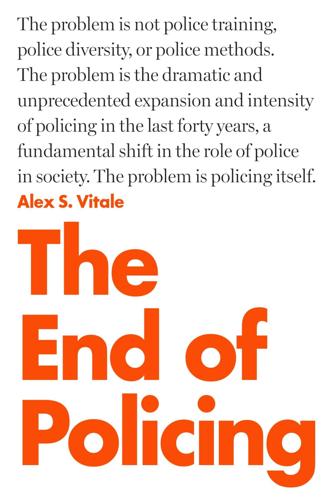
The End of Policing
by
Alex S. Vitale
Published 9 Oct 2017
The consequences, however, were largely the same, as they participated in strikebreaking and the killing of miners, such as in the Westmoreland County Coal Strike of 1910 and 1911. Their frequent attacks led Slovak miners to give them the nickname “Pennsylvania Cossacks” and prompted Socialist state legislator James H. Maurer to solicit, compile, and publish a huge amount of correspondence describing their heavy-handed tactics under the title The American Cossack.20 Interestingly, many of the letters point out that the new state police routinely showed no interest in crime control, serving strictly as publicly financed strikebreakers. In 1915, the State Commission on Industrial Relations described them as an extremely efficient force for crushing strikes, but … not successful in preventing violence in connection with strikes, in maintaining legal and civil rights of the parties to the dispute, nor in protecting of the public.
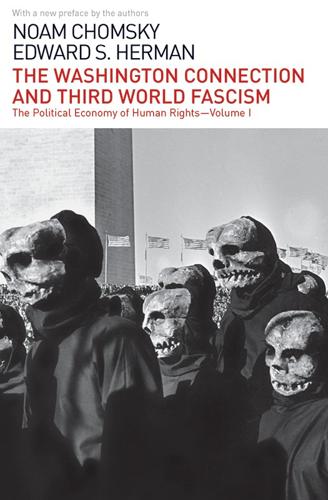
The Washington Connection and Third World Fascism
by
Noam Chomsky
Published 24 Oct 2014
If a bank will not extend credit without a guarantee of profit, much less will the foreigners finance our development and dispense with their profits. Our external debt amounts to about $10 billion.206 External interests not only sustain oppression by their support of the military governments; they are more directly in the picture as developers, expropriators and strike-breakers. Bishop Casadaliga claims that in Sao Felix where latifundias are frequently owned by MNCs, the foreign entities have fought his mild efforts more aggressively than the locals: “Of the attacks I have suffered the majority have been ordered by the administrators and technocrats of the multinational latifundios.”207 The Open Letter quoted at the beginning of this section is more passionate still in describing the sorrowful reality that has “demolished the image of ‘the great democracy of the North’,” including “the scandalous intervention of the United States in the installation and maintenance of military regimes” throughout Latin America; “the shameful Panamanian enclave with its military training centers” in which the murderers receive their higher education from U.S. instructors in techniques of “systematic persecution” and “scientifically perfected torture”; the activities of “the CIA and other agencies of penetration and espionage”; “the sometimes subtle and other times brazen domination and colonization practices” which have gradually eliminated the possibilities of independent economic development; and the “silent genocide, killing with hunger, with malnutrition, with tuberculosis the children of working families without resources.”
…
Wideman, op. cit., p. 64. The methods of classification of land eligible for reform has tended to accelerate conversion to intensive uses qualifying for exemption, with further displacement effects. 120. There have been strikes even under martial law, but thousands of workers have been detained by the military in strike-breaking efforts, and there can be no question but that the number and effectiveness of strikes has been greatly reduced. 121. Wideman, op. cit., p. 69. 122. Ibid. 123. Tom Jones, “Philippines Report,” Matchbox (Amnesty International), Winter, 1977, p. 13. 124. This is quite reasonable since Marcos bears direct responsibility for the system of torture.
…
At the time the report was written the minimum wage in the Free Zone was 55¢ an hour according to G&W (p. 53), 34¢ an hour according to Michael Flannery. 168. In its 1978 report on Dominican Operations G&W stresses the fact that it was a successor to South Puerto Rico Sugar Company (SPR), which still controlled operations at the time of the strike-breaking. G&W contends that the SPR management was “imperious” and that there was “chronic neglect of employees, wages, working conditions and health care.” An example of imperiousness was the fact that “At 5 p.m. every day the city water supply was shut off so SPR executives could water their lawns” (p. 29).

Border and Rule: Global Migration, Capitalism, and the Rise of Racist Nationalism
by
Harsha Walia
Published 9 Feb 2021
Even while more than 1 million Mexicans were being deported from the US during the 1950s,17 as many as 4.8 million Mexican workers were contemporaneously brought in as temporary braceros.18 The bracero program was beneficial to the Mexican government, which managed surplus populations through labor exportation, and lucrative for US agribusinesses, which used it as a tool of labor discipline by controlling braceros’ wages, governing braceros’ living conditions, and using braceros as strikebreakers against local farmworkers. After the program ended, the recruitment and exploitation of workers continued through the H-2 program, the country’s oldest and the world’s second-oldest migrant worker program, first initiated to recruit workers from the Bahamas, Barbados, and Jamaica during World War II.19 As more mostly Jamaican workers were brought in under the H-2 program after the end of the bracero program, strike waves and deportations involving thousands of H-2 migrant workers became commonplace, especially in Florida’s sugar industry, itself an outgrowth of US imperial interests and capitalist investments in Cuban sugar.
…
In the mid-1970s, shortly after the historic and victorious Delano grape strike in California, farmworker leader César Chávez led a campaign against “wetbacks” and reported undocumented workers to federal authorities. His cousin Manuel Chávez led union members in setting up a “wet line” of tents along a stretch of the border to detect, prevent, and even assault undocumented migrants crossing from Mexico. For Chávez, undocumented laborers were strikebreakers who undermined the power of local farmworker organizing. The far right is now co-opting the otherwise-heroic legacy of Chávez with proposed legislation to declare his birthday National Border Control Day. This is disturbing but unsurprising, as anti-migrant calls by Kearney and Chávez were mistaken and failed to understand that the border cannot work against globalized capital because the border is itself a “method for capital.”28 Free capital requires bordered and immobilized labor.
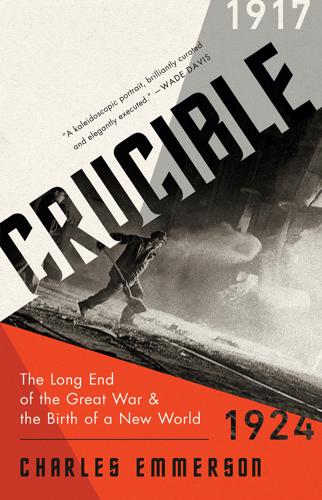
Crucible: The Long End of the Great War and the Birth of a New World, 1917-1924
by
Charles Emmerson
Published 14 Oct 2019
A senior Bolshevik, Lev Kamenev, writes an article warning that an uprising in the next days would be ‘a fatal step’. Leon is forced into a denial, claiming: ‘we have still not set a date for the attack’. Lenin responds to those who publicly discuss the imminence of insurrection with the worst insult he can muster: ‘strike-breaker’. Stalin attacks the ‘general croaking’ amongst intellectuals who used to speak about revolution so warmly over the table but now are suddenly afraid. Soon, he says, such ‘celebrities’ will be consigned to the ‘museum of antiquities’. ROSENBERG FORTRESS: De Gaulle attempts escape from Rosenberg for the second time in two weeks.
…
Italians should not be blinded by the American President’s flashing white smile. It is nothing more than a shop display of the wares of modern American dentistry, D’Annunzio cries. The teeth are as false as the man who wears them. SEATTLE–NEW YORK: A suspicious parcel arrives at the office of the Seattle strike-breaker, Mayor Ole Hanson. It leaks acid. Closer inspection reveals a home-made bomb inside. In Atlanta, a bomb of the same type explodes in the home of a former Senator, blowing off the hands of a maid. Reading a description of the parcels on his way home, a postal clerk recalls a series of others he handled, all with the same return address.
…
Fired up on whatever local booze they can find–cherry brandy in Ferrara–these gangs see themselves as the only true patriots left in a country on the brink of a foreign-inspired Bolshevik takeover. Their leaders, men who idolise D’Annunzio and his panache, award themselves the extravagant title of ras, in emulation of the tribal leaders of Ethiopia. Landowners and industrialists are only too willing to provide them with trucks and money if they turn their energies to strike-breaking. Thus enriched with potential new supporters–albeit with their own leaders, their own local power bases and a taste for independent action–the Fascist movement which Mussolini purports to lead becomes both more powerful and more unruly. Benito is skilful in riding this wave of violence and discontent.
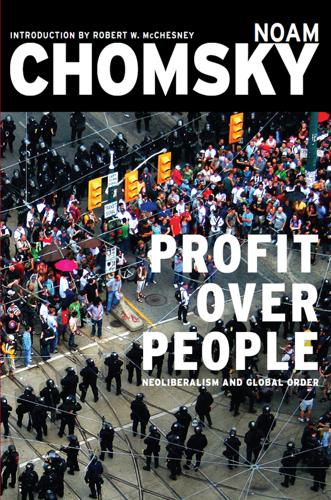
Profit Over People: Neoliberalism and Global Order
by
Noam Chomsky
Published 6 Sep 2011
The complaint was upheld by the US National Labor Relations Board, which ordered trivial penalties after years of delay, standard procedure. The NAFTA study, by Cornell University Labor economist Kate Bronfenbrenner, was authorized for release by Canada and Mexico, but delayed by the Clinton administration. It reveals a significant impact of NAFTA on strike-breaking. About half of union organizing efforts are disrupted by employer threats to transfer production abroad; for example, by placing signs reading “Mexico Transfer Job” in front of a plant where there is an organizing drive. The threats are not idle: when such organizing drives nevertheless succeed, employers close the plant in whole or in part at triple the pre-NAFTA rate (about 15 percent of the time).
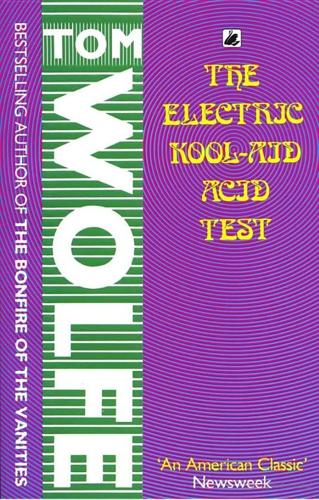
The Electric Kool-Aid Acid Test
by
Tom Wolfe
Published 1 Jan 1968
Not even on Perry Lane did people really seem to catch the thrust of the new book he was working on, Sometimes a Great Notion. It was about the head of a logging clan, Hank Stamper, who defies a labor union and thereby the whole community he lives in by continuing his logging operation through a strike. It was an unusual book. It was a novel in which the strikers are the villains and the strikebreaker is the hero. The style was experimental and sometimes difficult. And the main source of "mythic" reference was not Sophocles or even Sir James Frazer but... yes, Captain Marvel. The union leaders, the strikers, and the townspeople were the tarantulas, all joyfully taking their vow: "We shall wreak vengeance and abuse on all whose equals we are not... and 'will to equality' shall henceforth be the name for virtue; and against all that has power we want to raise our clamor!"
…
John Barkham of the Saturday Review said: "A novelist of unusual talent and imagination ... a huge, turbulent tale ..." Time said it was a big novel—but that it was overwritten and had failed. Some of the critics seemed put out with the back-woodsy, arch, yep-bub-golly setting of the novel and the unusual theme of the heroic strikebreaker and the craven union men. Leslie Fiedler wrote an ambivalent review in the Herald Tribune's Book Week, but in any case it was a long, front-page review by a major critic. Newsweek said the book "rejects the obligations of art and therefore ends up as a windy, detailed mock-epic barrel-chested counterfeit of life."
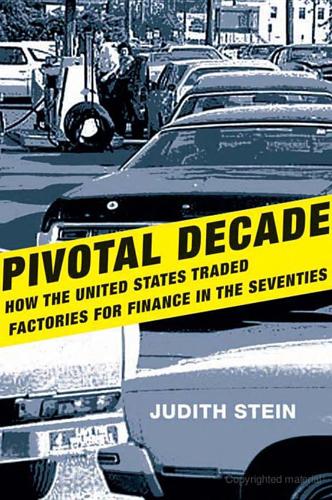
Pivotal Decade: How the United States Traded Factories for Finance in the Seventies
by
Judith Stein
Published 30 Apr 2010
He advocated sped-up elections, expansion of the NLRB from five to seven members, and measures penalizing law-breaking companies with both double back pay for illegally discharged workers, and debarment from federal contracts. He was silent on a provision that gave unions equal access to employees if employers addressed workers on company time or property. Another provision that did not please the president allowed strikers who were replaced by strikebreakers to return to their old jobs if the strike was over an initial contract. According to existing law, strikebreakers could retain their jobs in normal strikes over economic issues, but not in representational elections. But often firms that lost a bargaining election, like Stevens’s, then refused to bargain over an initial contract. Because most newly certified unions were weak, many thought that giving unions this extra protection would help, especially in the South.
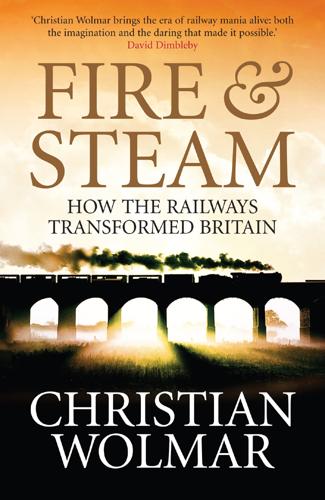
Fire and Steam: A New History of the Railways in Britain
by
Christian Wolmar
Published 1 Mar 2009
Midland Railway porters unloading milk, 1890. National Railway Museum. 21. Train driver, 1907. Hulton-Deutsch Collection/Corbis. 22. Women railway workers, 1917. National Railway Museum. 23. Ambulance train, c. 1915. Imperial War Museum. 24. Accident at Penistone, south Yorkshire, 1916. Arthur Trevena Collection. 25. Strike-breaking staff and volunteers, 1926. National Railway Museum. 26. Southern Railway poster, 1926. Milepost 92½. 27. Interior of a London, Midland & Scottish refreshment car, 1920s. Milepost 92½. 28. ‘Take Me By The Flying Scotsman’ poster, 1932. Milepost 92½. 29. ‘So Swiftly Home’ poster, 1932. National Railway Museum. 30.
…
Ambulance trains with extensive medical facilities, including a pharmacy, were widely used in the First World War, carrying a total of 2,680,000 soldiers. This spectacular accident at Penistone, south Yorkshire in 1916 did not result in any casualties because the subsidence which caused it started relatively slowly. Strike-breaking staff and volunteers posing on a London, Midland & Scottish locomotive at St Enoch Station, Glasgow during the General Strike of 1926. The railway companies were keen to advertise their facilities for travellers wishing to venture further a field. This poster produced for the Southern Railway in 1926 promoted rail services that linked with Atlantic Ocean crossings by the White Star, the world’s largest liner at the time.
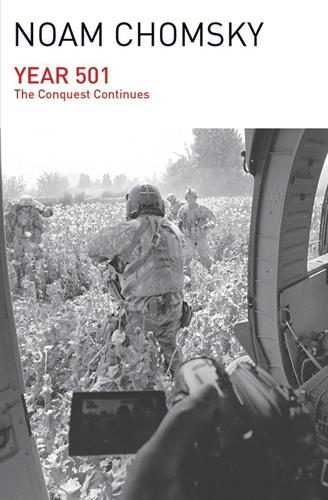
Year 501
by
Noam Chomsky
Published 19 Jan 2016
The National Association of Manufacturers warned in 1938 of the “hazard facing industrialists” in “the newly realized political power of the masses”; “Unless their thinking is directed we are definitely headed for adversity.” A counteroffensive was quickly launched, including the traditional recourse to murderous state violence. Recognizing that more would be needed, corporate America turned to “scientific methods of strike-breaking,” “human relations,” huge PR campaigns to mobilize communities against “outsiders” preaching “communism and anarchy” and seeking to destroy our communities, and so on. These devices, building upon corporate projects of earlier years, were put on hold during the war, but revived immediately after, as legislation and propaganda chipped away at labor’s gains, with no little help from the union leadership, leading finally to the situation now prevailing.14 The shock of the labor victories of the New Deal period was particularly intense because of the prevailing assumption in the business community that labor organizing and popular democracy had been buried forever.
…
The London Times ridiculed “this Scotch-Yankee plutocrat meandering through Scotland in a four-in-hand opening public libraries, while the wretched workmen who supply him with ways and means for his self-glorification are starving in Pittsburgh.” The far-right British press ridiculed Carnegie’s preachings on “the rights and duties of wealth,” describing his self-congratulatory book Triumphant Democracy as “a wholesome piece of satire” in the light of his brutal methods of strike-breaking, which should be neither “permitted nor required in a civilized community,” the London Times added. In the US, strikers were depicted as “brigands,” “blackmailers whom all the world loathes” (Harper’s Weekly), a “Mob Bent on Ruin” (Chicago Tribune), “anarchists and socialist[s]...preparing to blow up...the Federal building and take possession” of the money in the treasury vaults (Washington Post).

Make Your Own Job: How the Entrepreneurial Work Ethic Exhausted America
by
Erik Baker
Published 13 Jan 2025
But the prospect of worker resistance curbing the misuse of Taylorism did not present a particularly enticing prospect to employers, either. If they were to reap the benefits of Taylorist methods—improved productivity and less reliance on union-regulated craft work—they would need answers that Taylor himself could not supply to the question of how to overcome worker resistance. Violent strikebreaking, the preferred approach of nineteenth-century employers, always remained an option, though its attractiveness diminished considerably as the bloodshed of well-publicized labor crackdowns at Homestead, Pennsylvania, in 1892, Pullman, Illinois, in 1894, and Ludlow, Colorado, in 1914 helped turn a young generation of middle-class reformers against such heavy-handed practices.4 The nature of Taylorism also made it more difficult to use raw coercion to eliminate disobedience.
…
During the 1910s and 1920s, personnel management experts developed a battery of tests that aspired to help managers match workers to work, especially at the request of the federal government during World War I.17 One additional key resource for matching workers to work was “race”—in the early twentieth century, racist segregation in the workplace was considered a hallmark of “progressive” management, as opposed to the ruthless management style that used racial competition to drive down the wages of white workers. John Commons noted that upon touring a certain plant in Wisconsin, he was able to ascertain that its management was in thrall to the old commodity conception of labor because of the “Macedonians” and “Negroes . . . brought in from the South” for strikebreaking purposes.18 Education was the indispensable complement to worker-selection practices. Personnel management experts called for the expansion of existing on-the-job training programs, on the grounds that training warded off frustration and helped workers feel they were contributing effectively to the mission of the firm.
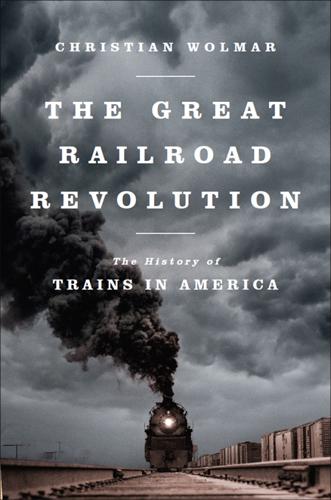
The Great Railroad Revolution
by
Christian Wolmar
Published 9 Jun 2014
Anxious to maintain the image of being a safe form of transportation, they strengthened their mail cars and improved their security. Most controversially, they employed security guards from the Pinkerton Agency to act as a kind of private army not only to protect the trains but also to pursue actively the perpetrators. The Pinkertons, whose uncompromising methods came to the fore in strikebreaking toward the end of the century (see next chapter), almost matched the robbers in their ruthlessness. The most famous of the train robbers was the James-Younger gang led by Jesse James and his brother Frank, former Confederate guerrillas in the Civil War who turned to a life of banditry. Having robbed various banks and become outlaws, in July 1873 the gang turned to train robbery on the Chicago, Rock Island & Pacific Railroad near Adair, Iowa.
…
The Knights were less concerned with the immediate terms and conditions of the workers, but rather sought to replace the wage system with cooperative enterprises—in the words of their leader, Terence Powderly, “to make each man his own employer.”24 However, in March 1886, when one of their members in Texas was fired for attending a union meeting by the Texas & Pacific Railroad, owned by the railroad baron Jay Gould, the men walked out, and Powderly used the opportunity to demand a minimum wage of $1.50 and recognition of the union. Gould refused to make any concessions, and thousands of men on his other railroads, which included the Union Pacific and the Missouri Pacific, also walked out. Crucially, the Brotherhood of Engineers did not support the strike and kept working. Gould brought in strikebreakers and the well-organized Pinkerton thugs, boasting, “I can hire one half of the working class to kill the other half.” Violence escalated. The workers destroyed many railroad facilities and indulged in acts of sabotage—for example, letting locomotives run out of steam, thereby putting them out of operation for at least six hours.
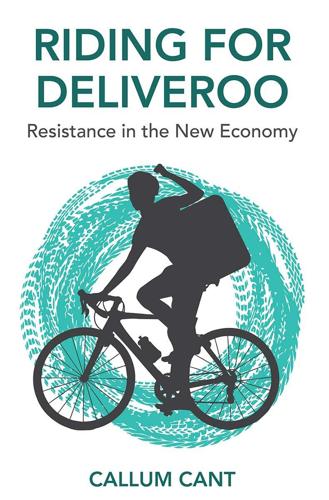
Riding for Deliveroo: Resistance in the New Economy
by
Callum Cant
Published 11 Nov 2019
Workers picketed their own sites and stopped work. A picket is a demonstration by workers and supporters at the entrance to a striking workplace, which aims to prevent that workplace from functioning as normal. Pickets (the people taking part in the demonstration) try and persuade workers making deliveries to turn around, block scab strike-breakers from entering the workplace, and generally apply pressure on the employer. Throughout the 1972 strike, workers also experimented with ‘flying pickets’. That is to say, they sent striking workers on buses around the country to picket out non-unionized sites as well. These flying pickets had great success in talking to workers on the lump on building sites outside of the large cities, and persuading them to stop work and join the strike.
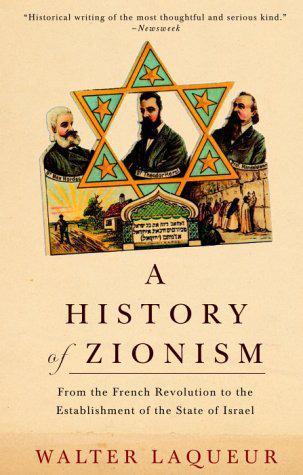
A History of Zionism
by
Walter Laqueur
Published 1 Jan 1972
The revisionists had meanwhile set up their own (‘national’) trade union, which enjoyed the patronage of some factory owners and leading orange growers eager to break the Histadrut monopoly of employment exchanges. In Petah Tiqva, Kfar Saba and elsewhere, they negotiated directly with the revisionists to get workers for their enterprises, bypassing the Histadrut. On some occasions, such as the strike in the Frumin biscuit factory, revisionists acted as strike-breakers.* They argued that they were fighting not the Jewish worker but merely the Histadrut which, far from being unpolitical in character, had become a tool of the Socialist parties and discriminated against revisionist workers. The labour leaders regarded this as a deliberate attempt to break the power of the trade unions on behalf of the ‘class enemy’, and ultimately to establish a semi-fascist dictatorship.
…
But the monopoly of the Histadrut and its privileged status had to be broken. The class struggle, which Zionism could ill afford, was to be replaced by a national system of arbitration. The Revisionist Labour Federation was founded in spring 1934. Its activities were attacked by the Histadrut, which regarded them as systematic and dangerous strike-breaking on a massive scale which had to be fought tooth and nail. Jabotinsky’s decision was not welcomed by some of his followers, who regarded the conflict which was bound to ensue as unnecessary, harmful both for the revisionist movement and for Zionism in general. They predicted, quite correctly, that as a result of establishing a separate trade union movement, revisionism would be identified in the public mind with the employers and their interests, and thus lose much of its popular appeal.
…
In contrast to Irgun, the Sternists regarded themselves as ‘revolutionary Socialists’, believing that the best way to gain the support of the Soviet Union was to take an active part in the liberation of the whole Middle East from the imperialist yoke.† They advocated a planned economy, opposed strike-breaking, and adopted the slogan of a Socialist Hebrew state.‡ This ideological transformation was not altogether unique. In neighbouring Arab countries, notably Egypt and Syria, groups of young intellectuals and officers, who up to 1942-3 had gravitated towards fascism and had believed in an Axis victory, later on transferred their political sympathies to the Soviet Union and subscribed to a Socialism of sorts.

Palo Alto: A History of California, Capitalism, and the World
by
Malcolm Harris
Published 14 Feb 2023
They went for it, and the Sons of Gwalia mine proved extremely successful under the Stanford athletic association treasurer, ultimately yielding an average of more than $1 million a year in gold for half a century of continuous operation.5 Hoover took another jump in salary, to $10,000 a year plus expenses, including a cook and a valet. Some resented taking orders from the twenty-four-year-old—especially when he was lengthening the work week, cutting wages, eliminating overtime, and reducing staff numbers—and the Hoover reign in Westralia led to a wave of labor unrest. But Italian strikebreakers brought in via contractors kept everything under control, and the gold flowed.6 Hoover did his job—for his Stanford professors, for his San Francisco boss, for his London employers, for himself, and for history. Thanks to him, tens of millions of dollars’ worth of gold—gathered gram by subterranean gram—presented itself to Western capital in lumps and drove twentieth-century economic expansion.
…
The struggle between labor and capital now reached a fever pitch in California. Both the CAWIU and the growers were getting more organized, and both were looking to force as the only way to settle their conflict. To stop the planters from bringing in scabs, the union operated a flying picket, intercepting strikebreakers on their way to work at one of the valley’s hundreds of cotton ranches. Overwhelmed, the police deputized growers and their hired thugs, while their financiers stocked up on tear gas. Pickets threatened to leave crops rotting in the field, which capitalists viewed (not incorrectly) as a kind of sabotage by default.
…
The feds suggested a compromise: 75 cents per 100 pounds picked, up from 60 cents but short of the dollar strikers wanted, and no recognition for the union.45 For both sides, with the federal carrot came the threat of its withdrawal. When the strikers held out for 80 cents, Creel canceled food relief and mobilized the United States Farm Labor Service to deploy 1,000 strikebreakers.46 To sweeten the deal for planters, the feds assured them that the government bank would still declare cotton worth financing at 75 cents, while threatening to pull the loans if they refused.47 The union leaders asked the strikers to accept the offer, and after some protestations they did, officially winning the strike and securing harvesters something like a $1 million raise.48 Nonrecognition wasn’t the end of the world anyway; they’d won without it before and could do it again.
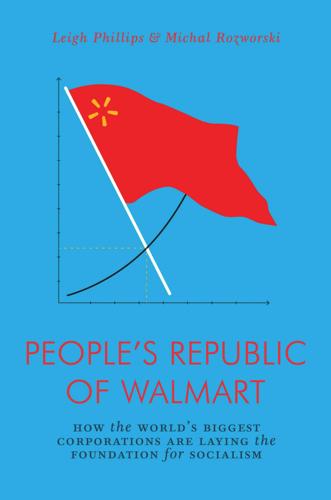
The People's Republic of Walmart: How the World's Biggest Corporations Are Laying the Foundation for Socialism
by
Leigh Phillips
and
Michal Rozworski
Published 5 Mar 2019
Indeed, even in embryo form, the Cybersyn communications network helped groups of workers to self-organize production and distribution during what would otherwise have been a crippling trucking strike, mounted by conservative business interests and backed by the CIA, in 1972. In so doing, it offered the struggling Allende administration a brief stay of execution. Cyber Strikebreaking It was during the strike that Cybersyn came into its own. The network could allow the government to secure immediate information on where scarcities were most extreme and where drivers not participating in the boycott were located, and to mobilize or redirect its own transport assets in order to keep goods moving.
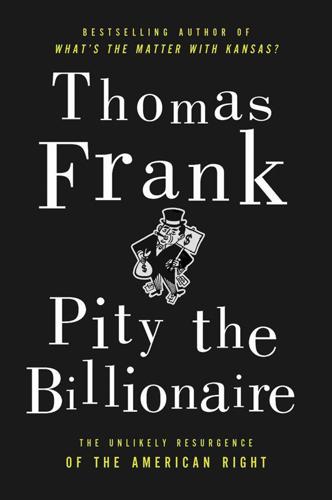
Pity the Billionaire: The Unexpected Resurgence of the American Right
by
Thomas Frank
Published 16 Aug 2011
There is no better instance of this erasure than the enormous rally held in West Virginia on Labor Day 2009 for the express purpose of announcing the solidarity between coal miners and the coal mine operators who employ them. The get-together featured the protest favorites Sean Hannity and Ted Nugent and was presided over by Don Blankenship, the CEO of Massey Energy, a pollution-spewing, strikebreaking mogul of the old school.2 Dressed in American flag clothing and boasting that the gathering had cost him “a million dollars or so,” Blankenship took the stage and declared that he was there to “defend American labor because no one else will.” Specifically, the CEO was standing tall against “our government leaders,” who are, with their safety and environmental meddling, “American workers’ worst nightmare.”
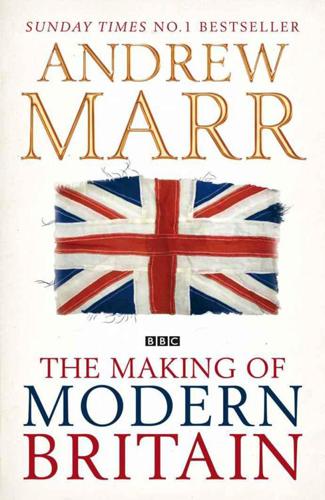
The Making of Modern Britain
by
Andrew Marr
Published 16 May 2007
As a forest of hands rose his language became wilder: ‘Sedition or no sedition, I want to say that if our men are murdered I am going to take a gun and I will shoot Lord Devonport’ – he being the leader of the employers with whom he was negotiating. Three weeks later, at Hyde Park, Tillett was again promising violence, and indeed revolvers were used, and men wounded, soon after in fighting between strikers and strike-breakers. Tillett then appealed to God to strike Lord Devonport dead and the crowd chanted back: ‘He shall die, he shall die.’ That strike failed, but there were waves of strikes in 1911–12 in the railways, textile mills, mines and shipyards which shook the Edwardian elite, Liberal and Tory. Revolutionary trade unionism, then fashionable on the left in France and America, was thought a more serious threat than socialist parties.
…
Britain’s small band of fascists responded with hysterical racist abuse. On the fifth day of the strike the government made its decisive move. London was going short of flour and bread: at 4 o’clock on the morning of 8 May a convoy of more than a hundred lorries, escorted by twenty armoured cars, went to the docks, to where strike-breakers had been quietly ferried on the Thames to avoid the pickets. Food was loaded and returned to a new depot in Hyde Park; the crowds watched but did not interfere. This was probably the psychological turning point, though the TUC and government continued to trade propaganda blows, and reports began piling up of accidents caused by volunteer drivers.

Respectable: The Experience of Class
by
Lynsey Hanley
Published 20 Apr 2016
Had we lived further north, or had our family remained in South Wales, the story might have been different: neither of them spent years looking for work, finally being parked on to incapacity benefit; they never found themselves sliding around a landfill site looking for discarded copper piping to sell on; nor did they ever have to decide whether or not to become strike-breakers.14 For whatever reason, such fates seemed closer, more likely, to me than they did to Richard. We didn’t have to live through these shattering experiences; we only had to look on and wonder what was happening to the country, never mind the world. Everybody was burned by it in some way, although in 1984 they also found at least one way to make reality a little more bearable.
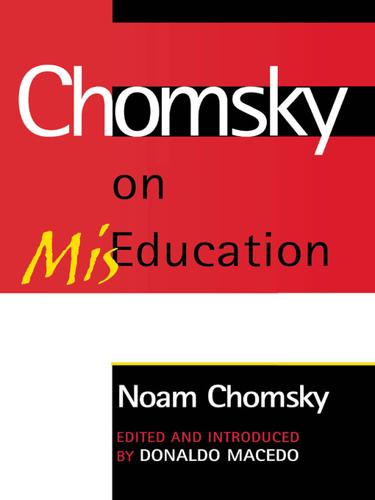
Chomsky on Mis-Education
by
Noam Chomsky
Published 24 Mar 2000
National Labor Relations Board, which ordered trivial penalties after years of delay, the standard procedure. The NAFTA study, by Cornell University labor economist Kate Bronfenbrenner, has been authorized for release by Canada and Mexico but not by the Clinton administration. It reveals a significant impact of NAFTA on strikebreaking. About half of union organizing efforts are disrupted by employer threats to transfer production abroad, for example, by placing signs reading “Mexico Transfer Job” in front of a plant where there is an organizing drive. The threats are not idle: when such organizing drives nevertheless succeed, employers close the plant in whole or in part at triple the pre-NAFTA rate (about 15 percent of the time).
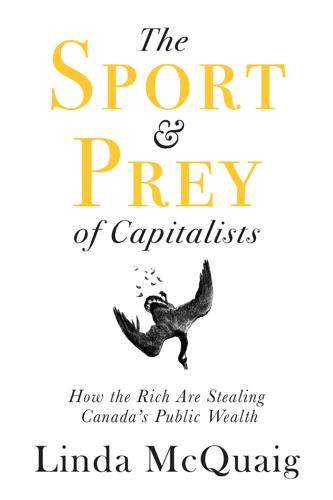
The Sport and Prey of Capitalists
by
Linda McQuaig
Published 30 Aug 2019
After heading the Illinois Central Railroad, Harrison had served from 2003 to 2009 as CEO of the privatized CN, where he introduced an unrelenting downsizing that eliminated staff and unprofitable lines and resulted in fewer and longer trains. When CN workers went on strike in 2007, Harrison quickly brought in strikebreakers from south of the border. His bare-knuckle profiteering won Harrison kudos from the business community — the Globe and Mail’s Report on Business named him CEO of the year in 2007 — but deep mistrust and hostility from CN workers.16 Harrison brought this same brash, outta-my-way approach to CP when he took the top job there after a 2011 takeover by a U.S. hedge fund.
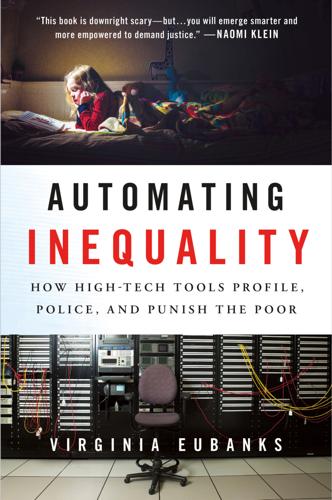
Automating Inequality
by
Virginia Eubanks
Bellesiles reports that in Chicago the Czechs and the Irish, traditionally ethnic adversaries, cheered each other. In Martinsburg, West Virginia, white and Black railroad workers shut down the train yard together. The working families of Hornellsville, New York, soaped the rails of the Erie railroad track. As strikebreaking trains attempted to ascend a hill, they lost traction and slid back into town. The depression also affected Germany, Austria-Hungary, and Britain. In response, European governments introduced the modern welfare state. But in America, middle-class commentators stoked fears of class warfare and a “great Communist wave.”7 As they had following the 1819 Panic, white economic elites responded to the growing militancy of poor and working-class people by attacking welfare.
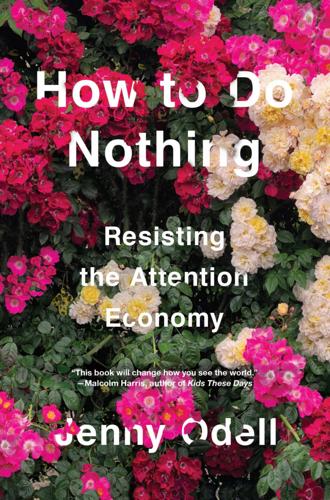
How to Do Nothing
by
Jenny Odell
Published 8 Apr 2019
Sensing that the police were in the palm of the city and the employers, strikers set up their own waterfront police to address disturbances along the docks, complete with an emergency number that led to a longshoreman-turned-dispatcher.35 All the while, the union continued having meetings and enlisting the votes of the rank and file. Much like a picket line itself, a strike is something whose strength lies in its continuity. Thus, as always, employers focused their efforts on breaking the line. Early on, they tried to get each port to negotiate its own separate agreement, thus preventing a coast-wide alliance. They hired strikebreakers—in some cases college football players—offering them a police escort and housing aboard a moored ship with plush treatment: meals, laundry, entertainment, and banking facilities. The employers also attempted to foment racism among the longshoremen; Quin writes that “[b]osses who would never hire Negroes except for the most menial jobs now made special, and relatively unsuccessful, efforts to recruit Negroes as scabs.”36 As thousands of men picketed up and down the Embarcadero, a daily spectacle whose consistency impressed onlookers, the police decided to selectively apply a previously un-enforced ordinance against picketing, running the picketers off the sidewalk with horses.
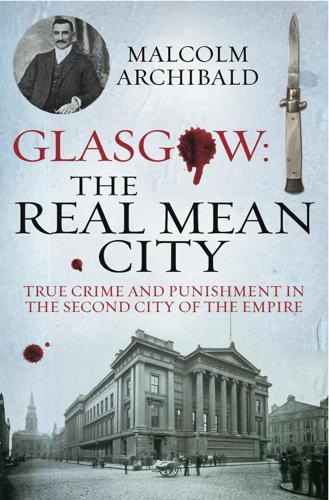
Glasgow: The Real Mean City
by
Malcolm Archibald
Published 31 Mar 2013
There were a number of riots in the first half of the century, as political and social tensions erupted into violence, and during the Dalmarnock riots of 1816, the Radical riots of 1819 and the subsequent Rising of 1820, the military were called in, and again in 1837 when the cotton spinners and miners rioted. That was a bad year altogether, with an economic downturn and high unemployment. There was resistance by combinations, as unions were known, with huge numbers of men protesting in the street and the fewer than 300 police unable to cope. Any nobs, as the strikebreakers were called, were liable to be attacked, and in July one nob was shot dead. A £500 reward was offered for information about the murder. Two informants met Sheriff Allison in a vault under the college in a cloak-and-dagger arrangement that included a creep through a back door at night. The informants told of a meeting by the leaders of the combinations in the Black Boy Tavern, and of an alleged plot to murder all the masters and nobs.
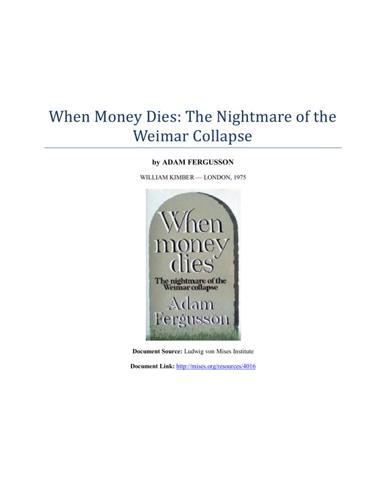
When Money Dies
by
Adam Fergusson
Published 25 Aug 2011
Meanwhile, the commission's insistence on making the Reichsbank independent of government control (implemented in May 1922) had turned out, in the British Ambassador's view, to have been like giving maniacs the control of the asylum: 'Last week', stated his July 10 diary entry, 'when by the blessing of Providence, the printers struck and the printing of notes was perforce interrupted, Havenstein brought in strike-breakers to get the presses going again.' There was more behind the printers' strike than D'Abernon's brief account. An extraordinary amount of paper money had been needed in June, causing the Reichsbank to issue 11,300 milliard marks in new notes. Owing to strikes, the usual inflow of these notes back into the bank 48 had not happened, so that there were none in reserve.
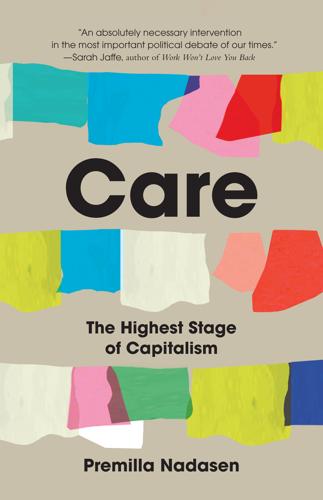
Care: The Highest Stage of Capitalism
by
Premilla Nadasen
Published 10 Oct 2023
DWU, for example, brought together Southeast Asian, South Asian, Caribbean, Central American, African, and East Asian workers in an unprecedented example of interracial labor solidarity. The mainstream labor movement often saw race as an obstacle to class solidarity, where nonunionized, nonwhite workers were used as strikebreakers. Cross-race alliances were viewed as rare but significant instances of transcending race and forging class solidarity. For domestic workers organizing under neoliberalism, it was necessary to build cross-race coalitions, given the diversity of the workforce. Solidarity was not premised on “color-blindness” or an erasure of difference.
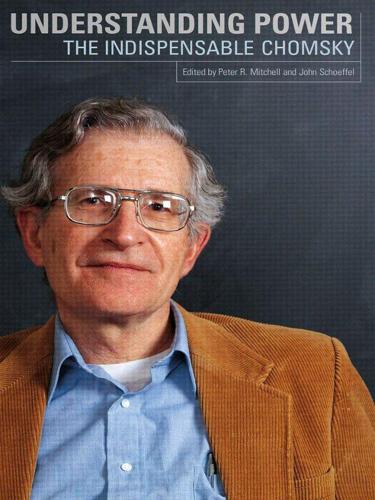
Understanding Power
by
Noam Chomsky
Published 26 Jul 2010
So to destroy the anti-Nazi resistance in Greece and restore the Nazi collaborators to power there, it took a war in which maybe 160,000 people were killed and 800,000 became refugees—the country still hasn’t recovered from it. 72 In Korea, it meant killing 100,000 people in the late 1940s, before what we call the “Korean War” even started. 73 But in Italy it was enough just to carry out subversion—and the United States took that very seriously. So we funded ultra-right Masonic Lodges and terrorist paramilitary groups in Italy, the Fascist police and strikebreakers were brought back, we withheld food, we made sure their economy couldn’t function. 74 In fact, the first National Security Council Memorandum, N.S.C. 1, is about Italy and the Italian elections. And what it says is that if the Communists come to power in the election through legitimate democratic means, the United States must declare a national emergency: the Sixth Fleet in the Mediterranean should be put on alert, the United States should start subversive activities in Italy to overthrow the Italian government, and we should begin contingency planning for direct military intervention—that’s if the resistance wins a legitimate democratic election. 75 And this was not taken as a joke, not at all—in fact, there were people at the top levels of the U.S. government who took even more extreme positions than that.
…
They in fact said in their publications things like, “We have about five or six years to save the private enterprise system.” 74 Well, one thing they did was to launch a huge propaganda program in the United States, aimed at reversing these attitudes. 75 It was actually called at the time part of “the everlasting battle for the minds of men,” who have to be “indoctrinated in the capitalist story”; that’s a standard straight quote from the P.R. literature. 76 So in the early 1950s, the Advertising Council [an organization begun during World War II and funded by the business community to assist the government with propaganda services at home] was spending huge amounts of money to propagandize for what they called “the American way.” 77 The public relations budget for the National Association of Manufacturers I think went up by about a factor of twenty. 78 About a third of the textbooks in schools were simply provided by business. 79 They had 20 million people a week watching propaganda films about worker-management unity, after the Taft-Hartley Act of 1947 allowed propaganda to be shown to basically captive audiences in companies. 80 They continued on with the “scientific methods of strikebreaking” that had been developed in the late 1930s: devoting huge resources into propaganda instead of goon-squads and breaking knees. 81 And it was all tied up with the “anti-Communist” crusade at the time—that’s the true meaning of what’s referred to as “McCarthyism,” which started well before Joseph McCarthy got involved and was really launched by business and liberal members of the Democratic Party and so on. 82 It was a way of using fear and jingoism to try to undermine labor rights and functioning democracy.
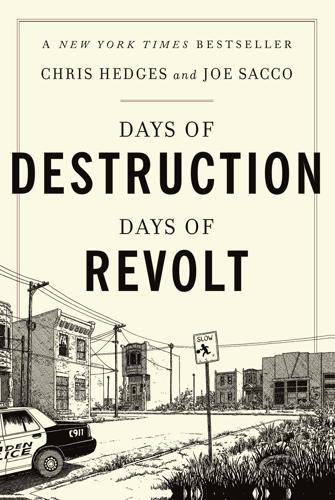
Days of Destruction, Days of Revolt
by
Chris Hedges
and
Joe Sacco
Published 7 Apr 2014
The limits of tyrants are prescribed by the endurance of those whom they oppress.”44 Sylvester is one of the few towns in this region that was not built and run by the coal companies. The residents kept out the coal camps and land companies. They built their own homes. They owned their own property. The area has long had a streak of fierce independence. When employees of the Webb Coal Mining Company at Ferndale, Local 1057 went on strike in 1922, company strikebreakers evicted the families of the miners and their furniture from company houses, the usual practice coal companies used against strikers. The miners set up a tent city in what is now Sylvester. They lived in this tent community for eighteen months, which included a harsh winter. A letter from Nellie Susan Miller in the 1996 Sylvester Dog Patch Reunion booklet reads: “Grandpa William Brinigar was among those trying to unionize the mines.
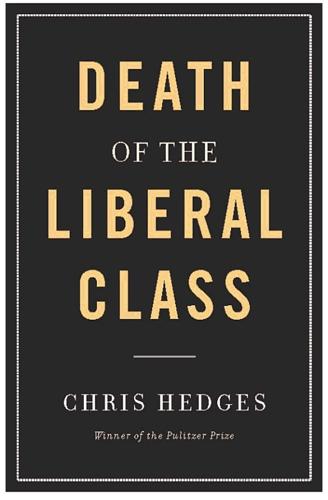
Death of the Liberal Class
by
Chris Hedges
Published 14 May 2010
The act forbade secondary or “common situs” picketing, closed shops, and monetary donations by unions to federal political campaigns. All union officers were forced to sign noncommunist affidavits or lose their positions. Heavy restrictions were placed on union shops, while individual states were allowed to pass “right-to-work laws” that outlawed union shops. The Federal Government was empowered to obtain legal strikebreaking injunctions if an impending or current strike “imperiled the national health or safety.” The act effectively demobilized the labor movement. It severely curtailed the ability to organize and strike and purged the last vestiges of militant labor leaders from the ranks of unions. With the passage of Taft-Hartley the power of labor to fight back effectively against the corporate state died.
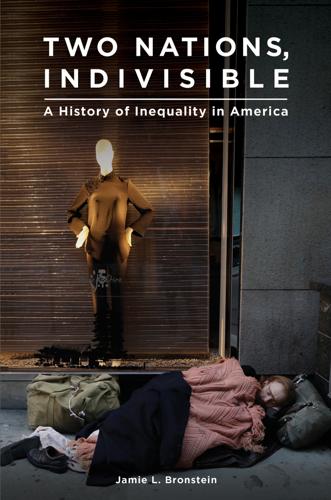
Two Nations, Indivisible: A History of Inequality in America: A History of Inequality in America
by
Jamie Bronstein
Published 29 Oct 2016
Those who left the South were more likely to become literate than those who stayed behind, and much more likely to move into higher-paid work than agricultural labor.101 Of course, migration was not a perfect solution. Although northern states lacked Jim Crow laws, many public amenities were informally segregated. Some restaurants refused service to African Americans. Black workers were often the last hired and the first fired in higher-paying jobs. They were used as strikebreakers, which precipitated race riots.102 The black urban poor used community resourcefulness to survive. An illegal sector including theft, prostitution, and vibrant numbers games prospered in some northern cities, “anticipating the emergence of the contemporary underground economy.”103 Recognizing that African Americans in the North faced economic segregation, DuBois advocated economic cooperation.

No Such Thing as a Free Gift: The Gates Foundation and the Price of Philanthropy
by
Linsey McGoey
Published 14 Apr 2015
He left his business ally Henry Clay Frick in charge of quelling the workers’ rebellion. As tensions with the striking workers became more heated, Frick built a fence three miles long and twelve feet high, lined it with barbed wire – including peepholes for the muzzles of rifles – and hired the Pinkerton Detective Agency to guard strike-breakers who were ferried in to bust the union. He later called on the US National Guard to quell the strike. Eight thousand state militia arrived. Men on both sides of the dispute were killed in the stand-off that followed. The strike held for months before the defeated workers were forced back to work.14 Frick sent a short one-word telegram to Carnegie, then travelling in Italy: ‘Victory!’
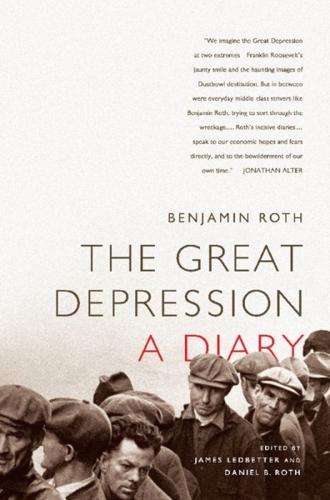
The Great Depression: A Diary
by
Benjamin Roth
,
James Ledbetter
and
Daniel B. Roth
Published 21 Jul 2009
So far in last 2 years the stock market has made 8 fake starts upward and then eventually came back to record lows. Commodities have also steadily declined and show no definite sign of upward turn. Moving picture operators go on strike in Youngstown last week. The theaters are being operated by strike-breakers under guard—while the entrance to each theater is being patrolled by union men. The union rate is $85 per week and they won’t take a cut. Public sympathy is not with the union in their attempt to maintain wartime wages. I am afraid we will witness many strikes in the next two years before wages are finally adjusted and I am also afraid the depression can’t end until wages come down.
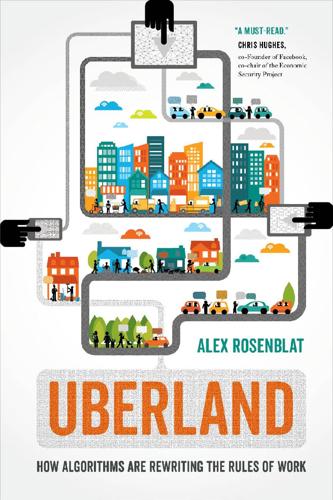
Uberland: How Algorithms Are Rewriting the Rules of Work
by
Alex Rosenblat
Published 22 Oct 2018
Uber’s city manager decided to turn off surge pricing during the strike, though not necessarily in response to the strike. Quartz reporter Alison Griswold suggests that Uber’s actions were responsive to announcements by the Port Authority about airport safety concerns as protestors swarmed.74 Uber’s suspension of surge pricing, however, was widely panned as a form of strikebreaking against taxi drivers. Uber carried such a reputational debt that it was an easy mark for an outraged consumer base with an appetite for political action and a willingness to believe bad things about Uber. Deleting an app is a low-barrier action. Only a sliver of the same pointed protest was directed at Lyft, Uber’s main competitor, even though its primary investor, Peter Thiel, was the number one technology-industry booster for then-presidential candidate Donald Trump.

Laziness Does Not Exist
by
Devon Price
Published 5 Jan 2021
Labor in the Twentieth Century: Studies in Working-Class Struggles and Insurgency (Amherst, NY: Humanity Books, 2000). 8. Donald M. Fisk, “American Labor in the 20th Century,” US Bureau of Labor Statistics, January 30, 2003, https://www.bls.gov/opub/mlr/cwc/american-labor-in-the-20th-century.pdf. 9. Robert Michael Smith, From Blackjacks to Briefcases: A History of Commercialized Strikebreaking and Unionbusting in the United States (Athens: Ohio University Press, 2003). 10. Joseph A. McCartin, Labor’s Great War: The Struggle for Industrial Democracy and the Origins of Modern American Labor Relations, 1912–1921 (Chapel Hill: University of North Carolina Press, 1997). 11. Lydia Saad, “The ‘40-Hour’ Workweek Is Actually Longer—by Seven Hours,” Gallup, August 29, 2014, https://news.gallup.com/poll/175286/hour-workweek-actually-longer-seven-hours.aspx. 12.
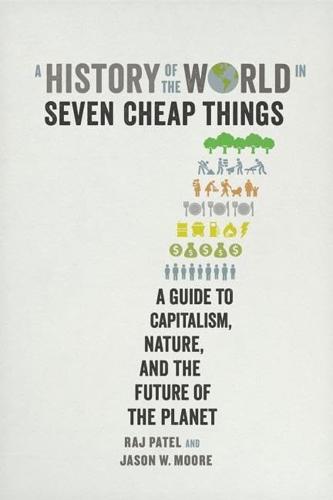
A History of the World in Seven Cheap Things: A Guide to Capitalism, Nature, and the Future of the Planet
by
Raj Patel
and
Jason W. Moore
Published 16 Oct 2017
Cotton workers, who demanded too many concessions, were systematically displaced on both sides of the Atlantic by technologies that reduced the need for their labor (some industrial cotton-worker militants were themselves displaced handloom weavers).55 Workers in one part of the world were pitted against those in another, with new trade routes opening up cheaper sources of cotton (saving time, money, and land for other more profitable uses).56 Resources were spent developing alternative fibers (just as cotton replaced wool, so new textiles have threatened the negotiating power of cotton workers). And union power was smashed directly, by strike-breaking private police and through legislation aimed at keeping restive workers in their place. The cotton industry was the site of some of the earliest workers’ strikes on both sides of the Atlantic. In Empire of Cotton, Sven Beckert reports cotton worker protests in Britain in 1792 and handloom weaver petitions for a minimum wage in 1807 supported by 130,000 signatures.57 The first US strike was led by women in 1824, when they walked away from a Rhode Island cotton mill.

SAM: One Robot, a Dozen Engineers, and the Race to Revolutionize the Way We Build
by
Jonathan Waldman
Published 7 Jan 2020
There, the union also started a weekly paper, and either it was good reading or there was little else printed on paper, for it was gobbled up by schoolkids. Soon they began making fun of the chief anti-union contractor, so much so that his kids ran home in tears. Their scab father promptly wrote the union and agreed to hire union men. All the while, union men checked the quality of the work done by strikebreakers. To the head of the union, open-shop work looked “unstable” and “hideous.” But of course non-union brickwork looked bad to the union. What the union needed was for non-union brickwork to look bad in the eyes of the public—and good luck with that. Over its long history, however, the union—bolstered by so much of a certain attitude—has remained perpetually adamant, which has brought it face-to-face with mighty foes.
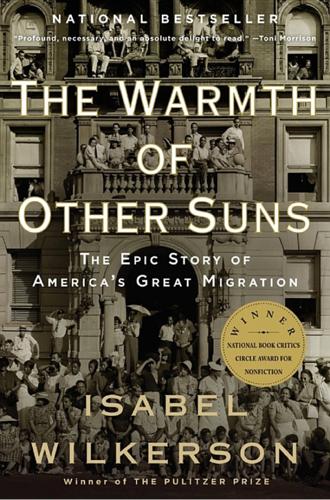
The Warmth of Other Suns: The Epic Story of America's Great Migration
by
Isabel Wilkerson
Published 6 Sep 2010
With a sense of urgency, it set out fifty-nine recommendations for improving race relations.90 It urged that the police rid the city’s colored section of the vice and prostitution that plagued the black belt; that the schools hire principals with an “interest in promoting good race relations”; that white citizens seek accurate information about blacks “as a basis of their judgments”; that restaurants, stores, and theaters stop segregating when they weren’t supposed to; that companies “deal with Negroes as workmen on the same plane as white workers” and stop using them as strikebreakers and denying them apprenticeships; that labor unions admit colored workers when they qualified; that employers “permit Negroes an equal chance with whites to enter all positions for which they are qualified by efficiency and merit”; that the press avoid using epithets in referring to blacks and treat black stories and white stories with the same standards and “sense of proportion.”
…
The southern caste system that held down the wages of colored people also undercut the earning power of the whites around them, who could not command higher pay as long as colored people were forced to accept subsistence wages. The dynamic was not lost on northern industrialists, who hired colored workers as strikebreakers and resorted to them to keep their labor costs down just as companies at the end of the twentieth century would turn to the cheap labor of developing nations like Malaysia and Vietnam. The introduction of colored workers, who had long been poorly paid and ill treated, served as a restraint on what anyone around them could demand.
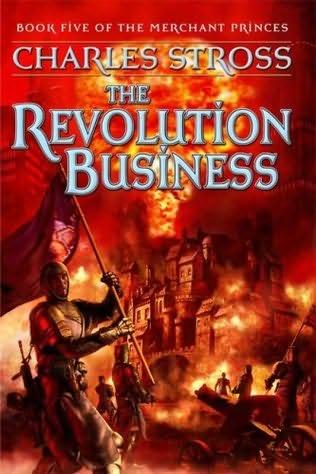
Revolution Business
by
Stross, Charles
Published 9 Apr 2009
Until, on the third day, the bus he was riding from Abadon reached Patwin (which Miriam would have pointed to on a map and called "Vallejo"), and ran into a general strike, and barricades, and grim-faced men beneath a blue flag slashed diagonally with a cross of St. Andrew beneath the glaring face of a wild turkey. "Ye can gae nae farthur," said the leader of the band blocking the high street, "wi'out an aye calling ye strikebreaker." He stood in front of the bus with arms crossed in front of him and the stolid self-confidence born of having two brothers-in-arms standing behind him with hunting rifles and an elderly and unreliable-looking carronade-probably looted from the town hall's front steps-to back them up. "I'm no' arguing wi't'artillery," said the driver, turning to address his passengers.
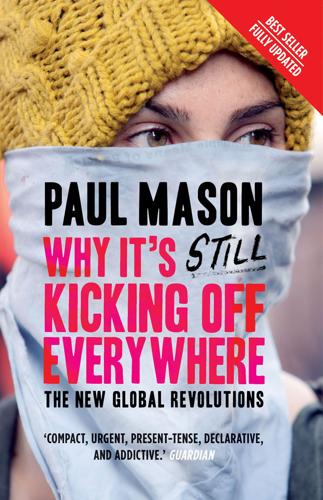
Why It's Still Kicking Off Everywhere: The New Global Revolutions
by
Paul Mason
Published 30 Sep 2013
A bloke from London Underground asks: ‘What are your plans for picketing?’ Both men look blank. There is further puzzlement among the hijab-clad young female medics who have joined us. After a few minutes back and forth in Arabic and cockney, the Brits explain the idea of blocking access to the workplace to prevent strike-breakers. ‘This had not occurred to us,’ say the Egyptians. On May Day 2011, as Shafiq and the secular medics jostle with the Brotherhood for control of the stage at the Doctors’ Union, workers begin filling Tahrir Square. It is, says Hossam el-Hamalawy, the first real May Day since 1951. The red flag does not predominate: instead people arrive with homemade banners, always with middle-aged men in the lead, chanting and singing.
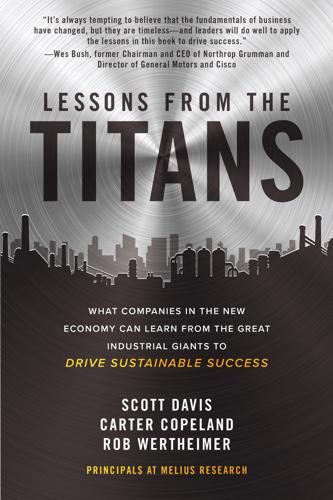
Lessons from the Titans: What Companies in the New Economy Can Learn from the Great Industrial Giants to Drive Sustainable Success
by
Scott Davis
,
Carter Copeland
and
Rob Wertheimer
Published 13 Jul 2020
Owens believed that the stock market still paid too much attention to it, and that CAT got too little credit for the company’s hard work making its cost structure more flexible, so subsequent downturns inflicted less damage. That improved flexibility, however, wasn’t exactly due to the systematic improvements we emphasize throughout this book. It came from lower investment and hard-won concessions from the unions via strikebreaking. By 2004, 15 years of underinvestment had weakened the company. Unlike some companies, CAT did generate enough cash to have invested more, but not enough money flowed to the factories to secure future growth. At that point CAT may have eventually gotten some credit for managing well through recessions, but the leadership team’s cautious approach had missed the fat pitches thrown in many of CAT’s end markets.
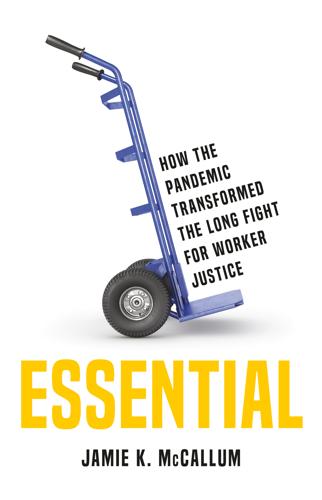
Essential: How the Pandemic Transformed the Long Fight for Worker Justice
by
Jamie K. McCallum
Published 15 Nov 2022
Depression-era UC organizing showed that this isn’t necessarily true. By providing relief, political education, and the chance to taste political victory, the Communist Party and other organizations turned unemployment into a radicalizing experience. In other words, organizing the unemployed turns potential strikebreakers into fellow travelers. This history has perhaps never mattered more than during the fall of 2021, given that the ongoing labor shortage was accompanied by another anomalous curiosity of the pandemic economy—a strike wave. By January 2021, six workers at the Hunts Point Produce Market had died of COVID.
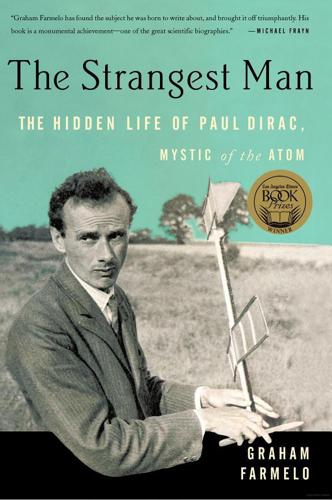
The Strangest Man: The Hidden Life of Paul Dirac, Mystic of the Atom
by
Graham Farmelo
Published 24 Aug 2009
King George V urged moderation, while in the Government, Churchill demanded ‘unconditional surrender’ from the workers (‘the enemy’) who were supporting the demands of the Miners’ Union. Some students thought the strike was a national crisis, but to others it was an opportunity to drive a tram or to play at being a docker or a policeman. Almost half the university’s students took part in strike-breaking activities, so the authorities had no choice but to postpone the end-of-year examinations, prolonging the merriment.9 Dirac heard from his mother that trams and buses in Bristol were still running, a relief to his father, so weakened by grief that he could not walk the mile between his home and the Merchant Venturers’ School.
…
Fate was about to bring Charles even more sorrow: he heard from Geneva in early March that his mother had died.10 The collapse of the General Strike was important in the development of political thought in Cambridge. The strength of opposition to the strike in the university demonstrated the unwillingness of its dons to disrupt the political status quo; even some of its socialist academics had been strike-breakers. The humiliation of May 1926 was one of the main motivations of a few Marxist scientists who were determined to establish radical politics in Cambridge and then to spread the word across the country. The most effective of the proselytisers was the young crystallographer Desmond Bernal, an energetic and charismatic polymath, who had joined the Communist Party after he graduated in 1923.11 He had a vision of a just and well-informed collectivist society, with all policy decisions taken according to scientific principles and with the benefit of expert technological knowledge.
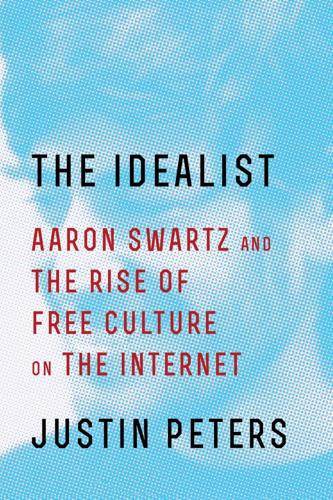
The Idealist: Aaron Swartz and the Rise of Free Culture on the Internet
by
Justin Peters
Published 11 Feb 2013
The number of free public libraries in America grew prodigiously in the 1890s and 1900s, precipitated by grants and donations from rich men, such as the industrialist Andrew Carnegie, who hoped to whitewash their fortunes by erecting “a brown-stone buildin’ in ivry town in the country with me name over it,” as the columnist Finley Peter Dunne wrote in the voice of his Mr. Dooley character. Carnegie began to spend millions of dollars founding libraries for the benefit of the American underclass not a decade after sending armed Pinkerton strikebreakers to quell a labor dispute at one of his steel plants in Homestead, Pennsylvania. (After subduing the Homestead union in 1892, Carnegie subsequently blacklisted many of its members from steel-industry employment.) Six years later, when Carnegie dedicated the library he founded in Homestead, he spoke of his hope that it would serve to “establish a higher code of conduct, a stricter regard for the proprieties of life, and to produce the class of man incapable of anything disgraceful”—such as going on strike, presumably.4 The donors’ dappled motives notwithstanding, their charity had essentially benevolent results.
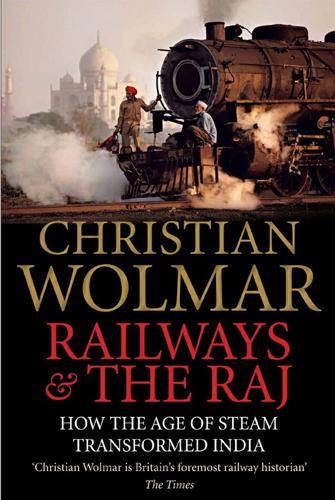
Railways & the Raj: How the Age of Steam Transformed India
by
Christian Wolmar
Published 3 Oct 2018
Nehru’s daughter, the Prime Minister, Indira Gandhi (she had taken the name of her husband, Feroze Gandhi, born Gandhy, who was not related to Mahatma Gandhi), reacted strongly, arresting 30,000 railway workers under emergency preventative detention laws, and at least four protesting railway workers were killed during battles with the police. The strike was undermined by the use of strikebreakers from the Railway Territorial Army. This was an organization that had been created out of the Railway Volunteers, the not-so voluntary force of Europeans and Eurasians which, as mentioned in Chapter 6, Kipling had seen being trained. The Railway Territorial Army (which changed its name after the strike to the less militaristic-sounding Railway Engineers Regiment) was made up of railway staff boosted by a few military personnel and was trained to ensure the continuation of services in the event of war.
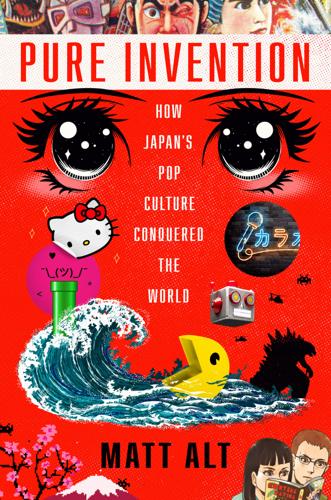
Pure Invention: How Japan's Pop Culture Conquered the World
by
Matt Alt
Published 14 Apr 2020
As they pressed for higher wages and more input into deciding production schedules, they transformed the tools of moviemaking into makeshift weapons. Special-effects technicians prepared paint bombs. Electricians modified rain machines into water cannons and rigged industrial fans to spew cayenne pepper powder at would-be strikebreakers. Among those who manned the barricades was a young Akira Kurosawa. It took two thousand riot police and the assistance of the U.S. Army’s First Cavalry to oust the occupiers. “They sent in everything but the battleships,” recalled an actress involved with the 1948 strike at the Toho movie studios.
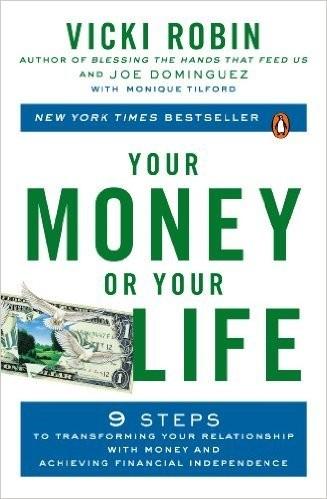
Your Money or Your Life: 9 Steps to Transforming Your Relationship With Money and Achieving Financial Independence: Revised and Updated for the 21st Century
by
Vicki Robin
,
Joe Dominguez
and
Monique Tilford
Published 31 Aug 1992
Volunteers remind us about the best part of being human—precisely because they work for love, not money. While some people fear that having too many volunteers would create competition for jobs with workers who need the pay to survive, the kind of creative, self-motivated volunteers we are talking about will function more like entrepreneurs than like strikebreakers. As a volunteer you might initiate projects and processes that will eventually need paid employees to administrate and carry out. Volunteers have historically pointed to social needs that eventually get funded and even become professions. Visionaries eventually need educators to implement and teach their ideas.

An Extraordinary Time: The End of the Postwar Boom and the Return of the Ordinary Economy
by
Marc Levinson
Published 31 Jul 2016
Miners at several pits walked out, and on March 12, without a ballot among his members, Scargill declared a national strike.22 The miners’ strike would be the defining moment of Thatcher’s tenure as prime minister. The National Union of Mineworkers was “the enemy within,” she told Parliament. Early on, physical attacks on strike-breaking miners and the killing of a taxi driver taking a strike breaker to work turned public opinion against the union. Thatcher, through careful preparation and a bit of good luck, emerged victorious. Miners who detested Scargill kept working, some power plants switched from coal to oil, and masses of police broke union blockades of working mines.
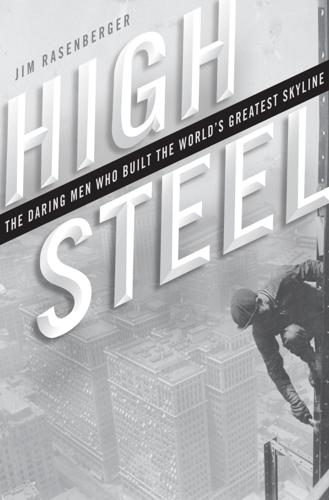
High Steel: The Daring Men Who Built the World's Greatest Skyline
by
Jim Rasenberger
Published 15 Mar 2004
When, in the summer of 1892, Carnegie’s second-in-command, Henry Clay Frick, told unskilled workers at a plant in Homestead, Pennsylvania, that he intended to lower their already meager wages, they responded in an altogether un-oxlike manner. They struck. Frick immediately fired all 3,800, then surrounded the plant with a barbed wire–trimmed fence and shipped in 300 armed Pinkertons to protect strikebreakers. As the Pinkertons arrived by barge on the night of July 5, 1892, gunfire broke out between guards and strikers. Nine workers and seven guards were killed, and 163 more seriously injured, before the skirmish ended. Six days later, the governor of Pennsylvania came to Frick’s aid, placing Homestead under martial law and effectively terminating the strike.
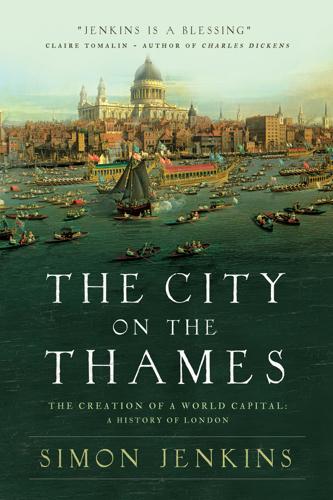
The City on the Thames
by
Simon Jenkins
Published 31 Aug 2020
The General Strike called by the TUC in 1926 did not originate in London, but the city’s dockers and transport workers obeyed the call to stop work in support of the miners. The mobilization of food trucks, buses and army units by the home secretary, Winston Churchill, and his food depot in Hyde Park, attracted publicity and led to intermittent street battles with the police. The conflict was won by the government, aided in London by some 100,000 strike-breakers. As before, the call to direct action had seen a tepid response from the capital. The death of aristocratic London The property market in inner London was hit by a novel trend, that of the West End losing much of its glamour. The owners of the great estates and their tenants had, since the 1880s, experienced agricultural depression, rising income tax and severe death duties.
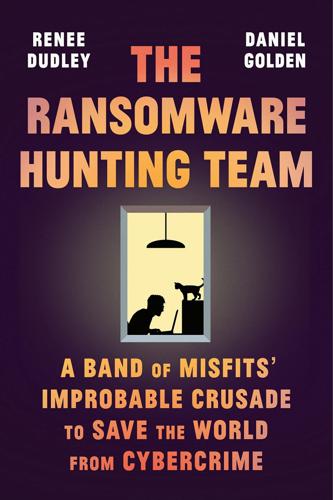
The Ransomware Hunting Team: A Band of Misfits' Improbable Crusade to Save the World From Cybercrime
by
Renee Dudley
and
Daniel Golden
Published 24 Oct 2022
Ryan, more charitable, calls him “an anarchist in the best sense … With somebody that brilliant, when their brain goes haywire, it goes haywire in a big way.” * * * Like Gillespie, Popp was a midwesterner from a less-than-privileged background. His paternal grandfather, Joseph P. Popp, a Hungarian immigrant, was a coal miner and union organizer in West Virginia; he fought with strikebreakers and reinforced his windows with chicken wire to protect against Molotov cocktails. After he was injured in a mine explosion, the family moved to Ohio. His son’s and grandson’s middle name, Lewis, was a tribute to longtime United Mine Workers president John L. Lewis. Cleveland’s suburbs were booming after World War II.
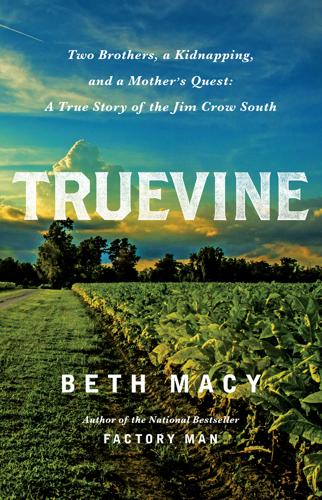
Truevine: Two Brothers, a Kidnapping, and a Mother's Quest: A True Story of the Jim Crow South
by
Beth Macy
Published 17 Oct 2016
As Henry North described it, “We were in considerable danger” from labor activists, some of whom were pelting performers with rocks. “For five days we were besieged in the Casey Hotel, with the circus stalled on the lot. We could not move it out, and the left-wing mayor of Scranton was disinclined to help us or offer protection.” This time the North brothers couldn’t round up enough strikebreakers to move the circus out, not even with the elephants on standby. At the end of the standoff, Henry paid $12,000 in “strike costs” to the union before taking the circus back to winter quarters midseason. To save the show, John Ringling North, thirty-four at the time, had the moxie to talk the best performers into moving west and switching to the Ringling subsidiary, Al G.
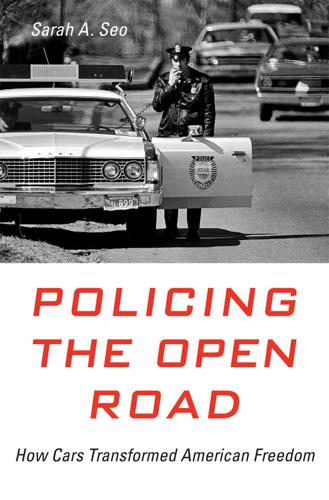
Policing the Open Road
by
Sarah A. Seo
Even as progressive Americans were looking across the Atlantic to European models of administration, they still feared the inclination of centralized police to turn into the private force of the political party in power. Many also worried that state police would be used for union-busting, just as Pinkerton’s strikebreakers had intervened in labor disputes on behalf of industry, often using violence.21 In an attempt to overcome this formidable resistance, Vollmer hitched the crime control rationale to traffic. In 1935, Vollmer and his acolyte Alfred Parker published Crime and the State Police, which, notwithstanding the title, really dealt with motor vehicles.
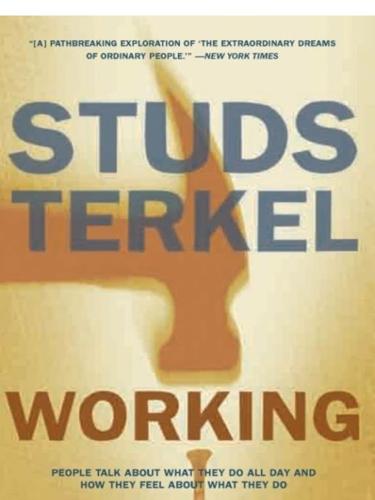
Working: People Talk About What They Do All Day and How They Feel About What They Do
by
Studs Terkel
Published 1 Jan 1974
That no longer worries me. I always tell the same story to everybody. Everything I do in business must be aboveboard—must be something I can face God with once I appear before Him after I die. An issue of the magazine features in graphic detail the successful exploits of a strikebreaker in Canada. “Maybe strikebreaking is the wrong word to use. What that person does is supplies, in a competitive system of labor and management. Strikes is one of the legitimate weapons labor can use. Management also has a right to keep functioning. Because of physical threats made upon management, most companies are not willing to continue to function.
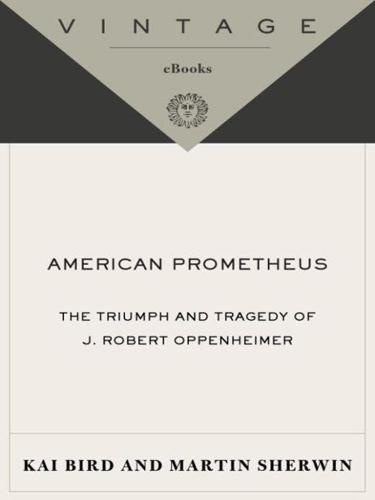
American Prometheus: The Triumph and Tragedy of J. Robert Oppenheimer
by
Kai Bird
and
Martin J. Sherwin
Published 18 Dec 2007
Such dramatic events could not go unnoticed by Oppenheimer or his students. Berkeley itself was split between critics and supporters of the strike. When the longshoremen initially walked out on May 9, 1934, a conservative member of the physics faculty, Leonard Loeb, recruited “Cal” (University of California, Berkeley) football players to act as strikebreakers. Significantly, Oppenheimer later invited some of his students, including Melba Phillips and Bob Serber, to come along with him to a longshoremen’s rally in a large San Francisco auditorium. “We were sitting up high in a balcony,” recalled Serber, “and by the end we were caught up in the enthusiasm of the strikers, shouting with them, ‘Strike!
…
Back in America, however, the Communist Party sent him on a tour of his native South, where he sang the praises of the socialist state and Comrade Stalin. Settling in Florida, he found work as a newspaper reporter and CP organizer. Inexplicably, one day he crossed a picket line and worked as a strike-breaker on a Miami newspaper; when his comrades discovered what he had done, Crouch fled to California, where, by 1941, he was serving as secretary of the Communist Party in Alameda County. He proved to be an unpopular comrade and an incompetent leader. “He spent a lot of his time drinking alone in bars,” wrote Steve Nelson.
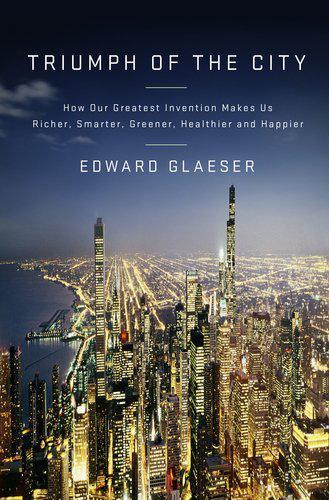
Triumph of the City: How Our Greatest Invention Makes Us Richer, Smarter, Greener, Healthier, and Happier
by
Edward L. Glaeser
Published 1 Jan 2011
Around the same time, the federal government also helped strengthen the unions’ hand. The National Labor Relations Act, passed in 1935, made it more difficult to fire striking workers and led to the formation of closed shops, where unions and firms agreed that all workers in a given facility must join the union. In these closed shops, it was impossible to hire nonunion strikebreakers, which gave workers greater power to press their demands on manufacturers. A company that has invested millions or billions in fixed infrastructure can’t easily move if its workers press for higher wages, more benefits, shorter hours, or other concessions. If striking workers take control of that valuable infrastructure, as they do during a sit-down strike, they can cause such financial pain that management will often give in.
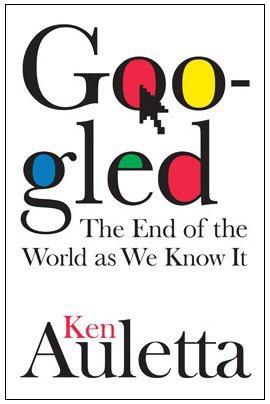
Googled: The End of the World as We Know It
by
Ken Auletta
Published 1 Jan 2009
So probably from when I was 12, I knew I was going to start a company eventually.” When he thought about the kind of company he wanted, Larry told me, he thought of his grandfather, an assembly-line worker in the Chevrolet plant in Flint, Michigan, who during sit-down strikes fearfully carried a heavy iron pipe wrapped in leather as protection from what he described as strike-breaking “goons.” Happy employees, Larry came to believe, are more productive. The rival for Larry’s attention was music. He had begun playing the saxophone as a child, and he played with considerable skill. After finishing his first year at East Lansing High School, Larry was among the talented musicians chosen to attend summer sessions at the prestigious Interlochen Arts Academy in Northern Michigan.
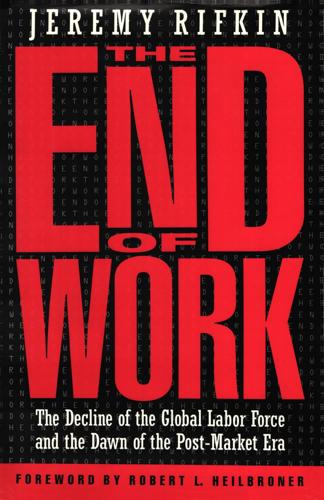
The End of Work
by
Jeremy Rifkin
Published 28 Dec 1994
This time the economic displacement created in its wake a new and permanent underclass in the inner cities and the conditions for widespread social unrest and violence for the remainder of the century. At first, blacks found limited access to unskilled jobs in the auto, steel, rubber, chemical, and meat-packing industries. Northern industrialists often used them as strikebreakers or to fill the vacuum left by the decline in immigrant workers from abroad. The fortunes of black workers in the North improved steadily until 1954 and then began a forty-year historical decline. In the mid-1950s, automation began taking its toll in the nation's manufacturing sector. Hardest hit were unskilled jobs in the very industries where black workers were concentrated.
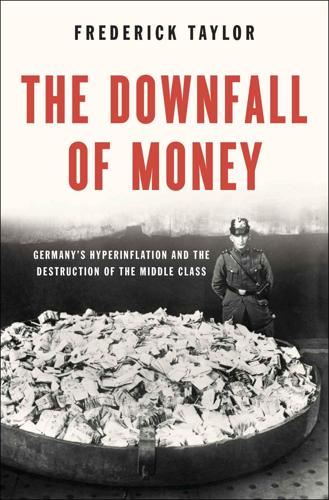
The Downfall of Money: Germany's Hyperinflation and the Destruction of the Middle Class
by
Frederick Taylor
Published 16 Sep 2013
The consequence of this espousal of a balanced budget, spending cuts and tight money by the two major English-speaking powers, was a slump known in its time, though not for long, as the ‘Great Depression’.16 In mid-1921, between a fifth and a quarter of the insured working population of Britain was out of work: 2.4 million people.17 Even in Britain, the harsh new economic policies led to strikes and riots, and were justified by a government rhetoric that exploited the fears of the middle classes. In America, the political atmosphere was thick with the ‘Red Scare’. Attorney General Alexander Mitchell Palmer pushed through arrests and deportations of foreign activists and agitators (the so-called ‘Palmer Raids’), and there was a rise in violent strike-breaking activity. So, again, in the light of the slump in two of its biggest foreign markets, to whom was Germany supposed to export in order to earn the gold that would soon be demanded by the Allies under the terms of the VersaillesTreaty? In any case, the country remained in very poor shape politically.
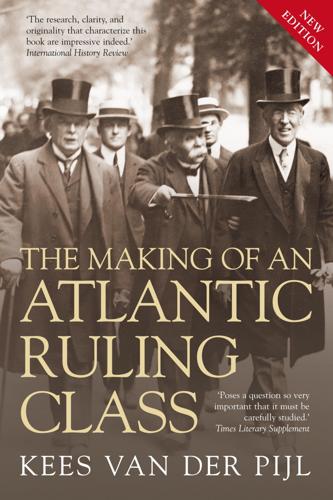
The Making of an Atlantic Ruling Class
by
Kees Van der Pijl
Published 2 Jun 2014
Persecution radicalized the socialist foreign language federations towards Bolshevism and broke up the Socialist Party — a split ‘almost entirely along the lines of national origin’.38 In the climate of sharp class conflict and ‘interiorized’ Anglo-Saxon chauvinism, capitalists purposely stimulated racism by using black strikebreakers against organized white workers. Race riots erupted in St. Louis, Chicago and Tulsa, while attempts by class-conscious blacks to appeal to the AFL were rebuffed by the segregationist leadership. At a meeting of the AFL Executive Council in 1917, Gompers reprimanded a Negro delegation for ‘somehow conveying the idea that they are to be petted or coddled and given special consideration and special privilege.
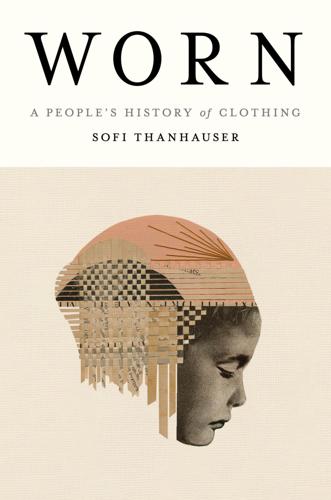
Worn: A People's History of Clothing
by
Sofi Thanhauser
Published 25 Jan 2022
Across from them stood deputized townspeople and anti-union millworkers armed with shotguns, rifles, and pistols. Dan Beacham, the mill superintendent (also the town mayor and town judge), had mounted a World War I machine gun to the roof of the four-story mill. When the whistle blew, strikers moved forward to block the mill gate. Strikebreakers headed for the entrance. A fight broke out, and then the shooting began. A pistol was fired, then the machine gun. The gunfire lasted three minutes. Seven strikers were killed, most shot in the back while fleeing, dozens more were wounded. The strike collapsed soon after. A mediation panel appointed by President Roosevelt concluded weakly that the textile workers’ grievances called for further study, urged the creation of a Textile Labor Relations Board to hear workers’ complaints, and toothlessly suggested that employers not discriminate against strikers.
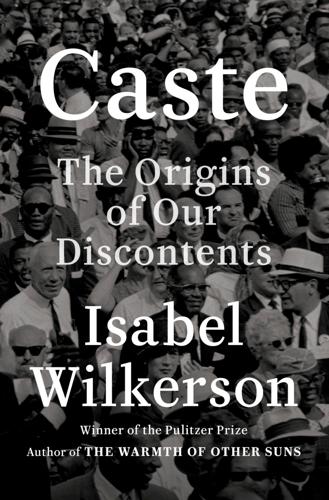
Caste: The Origins of Our Discontents
by
Isabel Wilkerson
Published 14 Sep 2020
They entered the North at the bottom, beneath southern and eastern Europeans who might not yet have learned English but who were permitted into unions and into better-served neighborhoods that barred black citizens whose labor had cleared the wilderness and built the country’s wealth. While there was no federal law restricting people to certain occupations on the basis of race, statutes in the South and custom in the North kept lower-caste people in their place. Northern industries often hired African-Americans only as strikebreakers, and unions blocked them from entire trades reserved for whites, such as pipe fitters or plumbers. City inspectors would refuse to sign off on the work of black electricians. A factory in Milwaukee turned away black men seeking jobs as they walked toward the front gate. In New York and Philadelphia, black people were long denied licenses merely to drive carts.
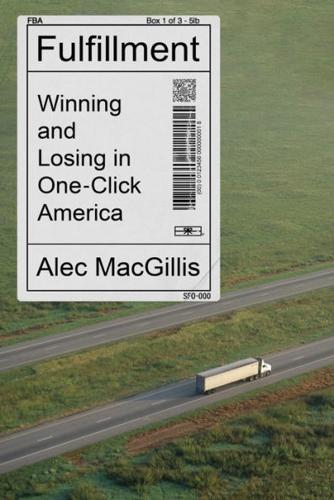
Fulfillment: Winning and Losing in One-Click America
by
Alec MacGillis
Published 16 Mar 2021
They tapped into discontent over the company’s inscrutable wage incentive system, under which some workers were paid much less than others for similar work, and over its callous handling of the transition to a new, more automated mill that needed fewer men. And they engaged the plant’s Black workers. In other industries and other towns, union discrimination had so often left Black workers in the role of strikebreakers. Organizers knew this would be fatal to their effort in Baltimore, given how many workers were Black—nearly a third of the plant, the largest pocket of Black steelworkers outside of Birmingham, Alabama. Organizers went door-to-door in Black neighborhoods and spoke at Black churches; white and Black pro-union workers paraded together in Dundalk, the white working-class town north of the Point.
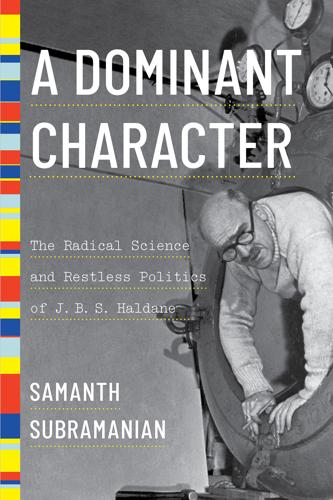
A Dominant Character
by
Samanth Subramanian
Published 27 Apr 2020
Whosoever will be saved, before all things it is necessary that he hold the Catholic faith: which faith except everyone do keep whole and undefiled, without doubt he shall perish everlastingly. . . . A hollering of Latin, recited from memory: It was a prime piece of Haldane braggadocio. A crowd gathered—large enough to block the street and prevent the strikebreaking trams from entering. Policemen tried to dispel everyone; Haldane insisted that they pushed some pious old ladies into the gutter. Nevertheless, the trams were stymied. Haldane had thrown himself successfully on the side of the agitators. Later, the university’s proctor fined him 2 guineas for his act of public expression.

England: Seven Myths That Changed a Country – and How to Set Them Straight
by
Tom Baldwin
and
Marc Stears
Published 24 Apr 2024
Wollaston, Life of Alfred Newton, New York, Dutton, 1921, pp. 118−120. 102 Burkhard Conrad, ‘The Politics of a Conversion’, International Journal for the Study of the Christian Church, 16 (2016): 182−96. 103 Anthony Trollope, The Clergymen of the Church of England, London, Chapman & Hall, 1866, pp. 55−66. 104 Sheldon Hall, ‘The untold story of the film Zulu’, Independent on Sunday, 19 January 2014. 105 Christian Wolmar, Railways & The Raj, London, Atlantic Books, 2017. 106 Cynthia Behrman, ‘The After-Life of General Gordon’, Albion, 1971, p. 50. 107 Yann Beliard, ‘Imperial Internationalism?’, Labour History Review, 74 (2003): 319−29. 108 Alessandro Saluppo, ‘Strikebreaking and Anti-Unionism on the Waterfront’, European History Quarterly 49 (2014): 570−96. 109 Margaret MacMillan, The War That Ended Peace, London, Profile Books, 2013, pp. 159−60. 110 R. G. Burnett, The Life of Joseph Rank, London, Epworth Press, 1945, p. 107. 111 Andrew Motion, Philip Larkin, London, Faber & Faber, 1993, pp. 276−8. 112 Ibid., p. 446; Larkin, ‘Aubade’, Collected Poems, pp. 208−9; Hague, Wilberforce, p. 502. 113 Philip Larkin, Further Requirements, ed.
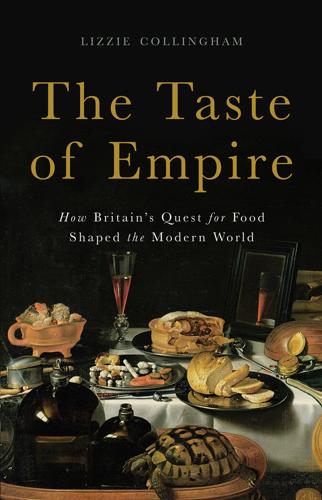
The Taste of Empire: How Britain's Quest for Food Shaped the Modern World
by
Lizzie Collingham
Published 2 Oct 2017
He signed up to a term of five years’ indentured labour on a Mauritian sugar plantation.13 Over the course of the nineteenth century, hundreds of thousands of Indian indentured labourers–an exceptionally high proportion of them ex-weavers–were taken to work on British, French and Dutch sugar plantations all over the Caribbean, as well as in Natal, Australia, Malaysia, Fiji and Hawaii.14 To the freed slaves they were akin to strike-breakers, as they undermined the Africans’ new-found bargaining power with the plantocracy, who were supplied with an alternative ‘quiet, docile and industrious’ labour force.15 The planters were satisfied with the new arrangement. One Mauritius-based firm calculated that if all the costs of passage, food, board and lodging were included, each labourer cost the planter a mere five shillings a week.16 The British West Indian plantations recovered, and on Mauritius, production rose above the levels reached during the days of slavery.17 The indentured labourer Totaram Sanadyha later likened to slaves the 500 Indians with whom he boarded the ship bound for Fiji in 1893.

To Serve God and Wal-Mart: The Making of Christian Free Enterprise
by
Bethany Moreton
Published 15 May 2009
Dible, Up Your OWN Organization! A Handbook for the Employed, the Unemployed, and the Self-Employed on How to Start and Finance a New Business (Santa Clara, CA: Entrepreneur Press, 1971). Subsequent editions dropped the reference to unemployment, and eventually replaced it with “entrepreneur.” 62. Stephen H. Norwood, Strikebreaking and Intimidation: Mercenaries and Masculinity in Twentieth-Century America (Chapel Hill: University of North Carolina Press, 2002), 15, 26. 63. http://webs.wichita.edu/?=markl&p=pizzahut; accessed December 1, 2008. 64. Vesper, Entrepreneurship Education 1985, xii, quotation on p. xiii. 65. James S.

The Rough Guide to Vienna
by
Humphreys, Rob
Taken by surprise by the size of the demonstration, the mounted police panicked and fired point-blank into the crowd. In the ensuing chaos, 89 people were killed, and up to a thousand wounded, and the Justizpalast burned to the ground. The SDAP called an indefinite national strike, but refused to call out the Schutzbund. With the heavily armed Heimwehr acting as strike-breakers, the general strike was easily crushed and civil war was postponed for a few more years. Austro-fascism The onset of the Great Depression further destabilized what was already a fragile democracy. In the elections of November 1930, the Heimwehr, under Prince Starhemberg, won its first parliamentary seats for its newly formed political wing, the Heimatblock.
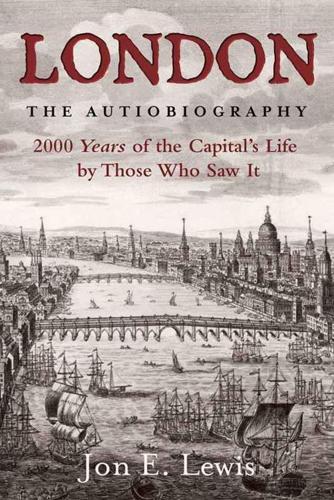
London: The Autobiography
by
Jon E. Lewis
Published 25 Aug 2009
On the following day Churchill ordered pockets of troops to be stationed around London. There were running battles between strikers and police in New Cross, Deptford and Poplar but the TUC had little stomach for constitutional or armed conflict with the government. Even more detrimental to the effectiveness of the strike was the vast army of volunteer strike-breakers (as many as 114,000 in London alone) who had come forward to staff essential services. MY SYMPATHIES HAVE always been on the side of the underdogs and the underpaid, but they were not in favour of this general strike, which was an attempt by the T.U.C. to coerce the Government of the country and take over its power.
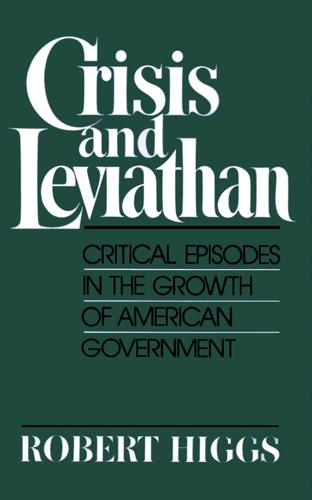
Crisis and Leviathan: Critical Episodes in the Growth of American Government
by
Robert Higgs
and
Arthur A. Ekirch, Jr.
Published 15 Jan 1987
Though much less costly in lives and property, Chicago's Haymarket riot of 92 History 1886 provoked widespread fears for the stability and order of society. In July 1892 a strike at Carnegie's Homestead works near Pittsburgh degenerated into a small war between private armies; casualties mounted to sixteen dead and some sixty wounded before the militia arrived to restore order. Simultaneously, far to the west, striking miners battled strikebreakers in another industrial free-for-all at the silver mines of Coeur d' Alene, Idaho. Again troops had to be called out. At Buffalo in August 1892 thousands of state militiamen intervened in a strike by switchmen. Apprehension of impending anarchy spread across the land. The public's outrage focused on two aspects of the disorderly industrial relations, especially those involving the railroads: the violence itself, which directly threatened lives and property, and the spillover costs.
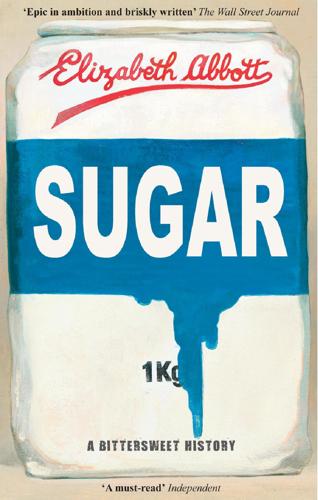
Sugar: A Bittersweet History
by
Elizabeth Abbott
Published 14 Sep 2011
“It’s hard . . . the blade getting dull and mud-caked as I slash . . . and on to the end of the long long row and the next and the next and it will never be done thinning and weeding and weeding and weeding,” laments the narrator in Joy Kogawa’s Obasan. Cree women and children labor on a sugar-beet farm in Raymond, Alberta, c. 1910. Filter presses turning beet into sugar, Greeley, Colorado, 1908. On March 24, strike-breaking farmer Charles Arnold fired at unarmed unionists, killing one and wounding four others. Despite witnesses to his rampage, an all-Anglo jury acquitted Arnold of all charges. This injustice inflamed the strikers and reinforced their determination to win. On March 30, after tense negotiations, the beet growers conceded most of the union’s demands and the strike ended.
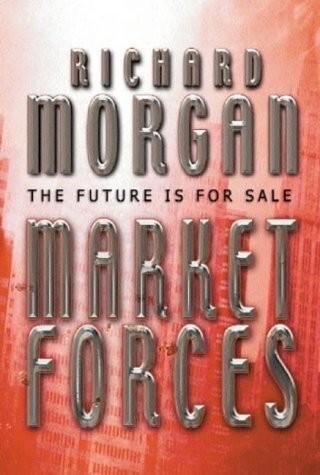
Market Forces
by
Richard K. Morgan
Published 4 Mar 2004
Little squirt’s a union organiser in the banana belt, up around Bocas, where we were. Not the kind of thing you put on a Trade and Investment CV if you can avoid it.’ ‘I guess not.’ Lopez’s eyes went hooded. ‘I try to keep the worst of the shit from raining on him. I made contacts that are good for that much. And when the strike-breakers do come round, I pay his hospital bills, I feed his kids. Gets back on his feet and he drops by to insult me again.’ Chris thought feelingly of Erik Nyquist. ‘Family, huh?’ ‘Yeah, family.’ The agent lost his drugged introspection. Shot Chris a sideways look. ‘We’re just talking here, right, boss?
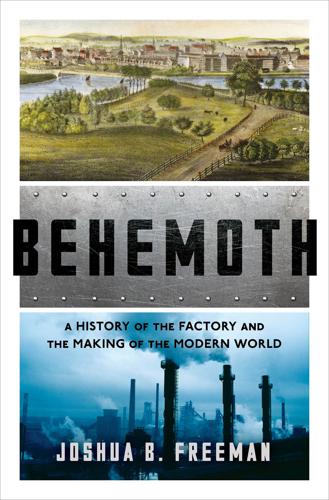
Behemoth: A History of the Factory and the Making of the Modern World
by
Joshua B. Freeman
Published 27 Feb 2018
Repeated prewar efforts by the United Rubber Workers to unionize Goodyear’s Gadsden plant and Firestone’s Memphis plant failed, with a reign of terror in Alabama that included severe beatings of union organizers by company thugs and antiunion workers in cahoots with local law enforcement.11 The Radio Corporation of America (RCA) also reacted quickly to labor militancy. In 1936, a month-long strike, overcoming imported strikebreakers and police violence, led to the unionization of the company’s two-million-square-foot complex in Camden, New Jersey, just across the Delaware River from Philadelphia, where 9,700 workers (75 percent female) produced nearly all of its products. Almost immediately, RCA began moving operations elsewhere, between 1936 and 1947 setting up a component plant in Indianapolis, a radio plant in Bloomington, Indiana, tube plants in Lancaster, Pennsylvania, and Marion, Indiana, a record plant in Hollywood, and a cabinet shop in Pulaski, Virginia.

Capitalism in America: A History
by
Adrian Wooldridge
and
Alan Greenspan
Published 15 Oct 2018
Frick tried to rationalize labor costs by linking wages to the price of steel (which was declining) rather than to the company’s profits. The Amalgamated Association of Iron and Steel Workers resisted; Frick built a three-mile-long stockade around the factory, complete with barbed wire, 2,000-candlepower searchlights, and rifle slits, and employed 300 men from the Pinkerton detective agency to protect his strikebreakers. Pitched battles followed, leaving 16 dead and the public shocked. When the strikers won the first round of the battle, forcing the Pinkertons to surrender, the governor of Pennsylvania ordered 8,500 troops to break the strike and seize the mill. The most important cause of these protests was deflation, which gripped the economy from the end of the Civil War to 1900 and which was particularly severe from 1865 to 1879.

The Rough Guide to Finland
by
Rough Guides
Published 31 May 2010
Under the Power Act, the Eduskunta vested in itself supreme authority within Finland, leaving only control of foreign and military matters residing with the Russians. Kerensky refused to recognize the Power Act and dissolved the Finnish parliament, forcing a fresh election. This time a bigger poll returned a conservative majority. Around the country there had been widespread labour disputes and violent confrontations between strikers and strike-breaking mobs hired by landowners. The Social Democrats sanctioned the formation of an armed workers’ guard, soon to be called the Red Guard, in response to the growing White Guard, a right-wing private army operating in the virtual absence of a regular police force. Within several months, Finland issued a de facto statement of independence and, shortly thereafter, an independent constitutionapproved by the Eduskunta and recognized by the Soviet leader, Lenin

The River of Lost Footsteps
by
Thant Myint-U
Published 14 Apr 2006
He was captured while making his way to the Shan hills, convicted of treason, and hanged sometime after the rains. Old-style revolt wasn’t the only product of hard times. Earlier that year Burma’s pluralistic society had taken a disturbing turn toward longterm ethnic conflict. A labor dispute between striking Indian dock-workers and Burmese strikebreakers, with taunts about race and women, had turned bloody, escalating quickly into an all-out assault by mobs of Burmese against any and all Indians in the poorer quarters of downtown Rangoon. It was a massacre, and hundreds, perhaps more, of ethnic Indian civilians were killed. Worse might have followed, from renewed Burmese attacks or from Indian reprisals, had it not been for the deployment of the Cameron Highlanders of the Rangoon garrison, their machine guns mounted and made ready along Fraser and Dalhousie streets.

The Color of Money: Black Banks and the Racial Wealth Gap
by
Mehrsa Baradaran
Published 14 Sep 2017
These exclusions drove a wedge between black and white working classes as black workers became a point of contention between labor and employers. Often, when a union and an employer were in a labor dispute, black workers were recruited to cross the picket line to fill the whites’ places. Black workers thus came to represent strikebreakers who posed a threat to union negotiations, which resulted in acts of open hostility and violence by union members toward the black workers. As a measure of goodwill to boost labor relations, it was customary for companies to charter trains to ship blacks back south. As more blacks left the boll weevil-infested cotton fields of the South for the promise of work in northern industry, they faced factories infested with racial animosity.
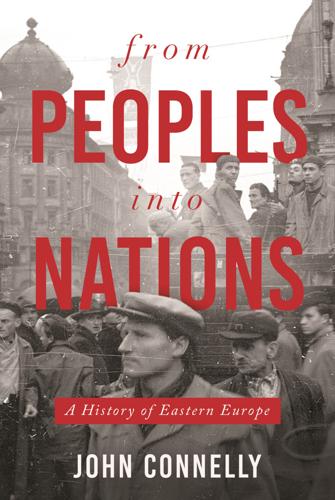
From Peoples into Nations
by
John Connelly
Published 11 Nov 2019
The Romanian fascist Corneliu Codreanu, who began his career as a student radical in the Moldavian capital of Iaşi, called Jews an “army that comes into our land to conquer us,” and said that if Communism prevailed, the Romanian people would be “mercilessly exterminated” and the land “colonized by Jewish masses.”10 Like many fascists, Codreanu lacked military credentials because he had been too young to serve in World War I, but he made up for that by smashing the heads of workers and Communists in squadrons of strikebreakers who took to Iaşi’s streets in the early postwar turmoil. His mentor Alexandru C. Cuza, a professor of political economy, was an extreme anti-Semite who formed the Radical Christian Union in 1922. Cuza used the swastika as his movement’s symbol yet seemed tame to Codreanu and his friends because he foreswore militancy.11 In 1923 authorities arrested Codreanu for conspiracy to murder those responsible for granting Romanian citizenship to Jews.
…
In June 1935, Paul appointed as prime minister the old Radical politician Milan Stojadinović, and his three years in office brought relative calm, continued relaxations of censorship as well as hopeful accommodation with the Croat leader Vladko Maček. Soon Muslim, Slovene, and even Croatian politicians were involved in the government.59 Meanwhile, a tiny Serb fascist movement had emerged under Dimitrije Ljotić, a lawyer from a prominent family, who had made a name for himself as a strike-breaker after World War I and as minister of justice from February to August 1931. During student days in Paris, Ljotić had come under the spell of the French integral nationalist Charles Maurras; he came to believe in the blood kinship of Serbs, Croats, and Slovenes, an unusual case of racism serving multiethnic cooperation.

The Relentless Revolution: A History of Capitalism
by
Joyce Appleby
Published 22 Dec 2009
Its initial openness to unskilled laborers, blacks, and women closed over time, in part because of the prejudices of the member unions, which forced segregation on black unions. They viewed women at best as part of a pool of labor that, like illegal immigrants today, kept wages down. At worst, they were likely strikebreakers. In keeping with its fierce loyalty to the federation’s core membership of white men, the AFL urged Congress to renew the 1882 immigration restriction on Chinese in 1901. Still, the AFL never enlisted more than 5 percent of the work force. It had an uphill struggle because native-born Americans who were moving into the city from the countryside after the Civil War experienced real improvements in their standard of living, bolstered by steady factory work, accessible medical clinics, and free public education.
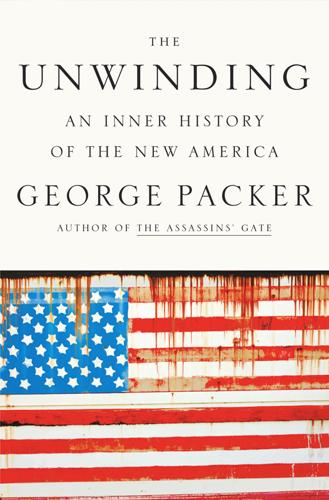
The Unwinding: An Inner History of the New America
by
George Packer
Published 4 Mar 2014
In the spring of 1937, twenty-five thousand workers in the Mahoning Valley joined a national steel strike. Banned from the airwaves, they mounted loudspeakers on trucks and went neighborhood to neighborhood to announce the next meeting or picket. They also stockpiled baseball bats. Almost none of the strikers were black. In the past, black workers had been brought up from the South as strikebreakers, and for decades they were consigned to the dirtiest, most menial jobs in the mills, like scarfer—taking the defects out of the steel with a blowtorch. They shared a deep mutual wariness with their white coworkers, one that even the idealistic rhetoric of SWOC couldn’t overcome. It became known as the Little Steel strike.
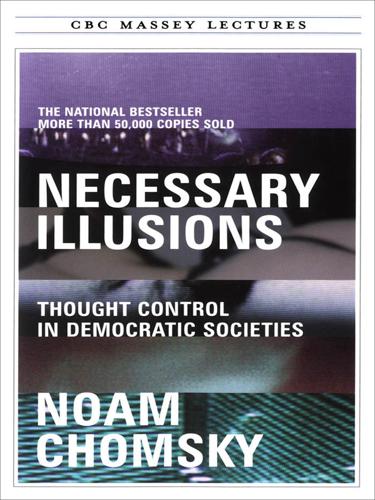
Necessary Illusions
by
Noam Chomsky
Published 1 Sep 1995
In a 1943 review, the ACLU praised the “state of civil liberty” during World War II in contrast to World War I, when governmental and other pressures “resulted in mob violence against dissenters, hundreds of prosecutions for utterances; in the creation of a universal volunteer vigilante system, officially recognized, to report dissent to the FBI; in hysterical hatred of everything German; in savage sentences for private expressions of criticism; and in suppression of public debate of the issues of the war and the peace.”190 But this positive evaluation of the state of civil liberty during World War II should be tempered in the light of the (Court-approved) dispatch of 110,000 Japanese-Americans to concentration camps; the 1940 Espionage Act and Smith Act,191 initiation of repressive activities of the FBI that persisted at a high level for at least thirty years; government strikebreaking and destruction of the Socialist Workers Party; full-scale martial law in Hawaii barring trial by jury, habeas corpus, and other due process rights; jailing of dozens of people for such seditious acts as counselling draft opposition; barring of dissident press from the mails and seizure of newspapers and other publications; surveillance of all international message traffic under wartime censorship; brutal treatment of conscientious objectors, etc.192 Meanwhile, left-liberal opinion called for restricting the Bill of Rights to “friends of democracy” and “exterminating” the “treason press,” while Reinhold Niebuhr stressed the “greater measure of coercion” required during a national emergency and approved infringements on “the freedom of organizations to spread subversive propaganda” and community drives “to eliminate recalcitrant and even traitorous elements.”193 All this was at a time when opposition to the war was minuscule, the United States was by far the richest and most powerful state in the world, and its national territory had not been threatened with attack since the War of 1812.
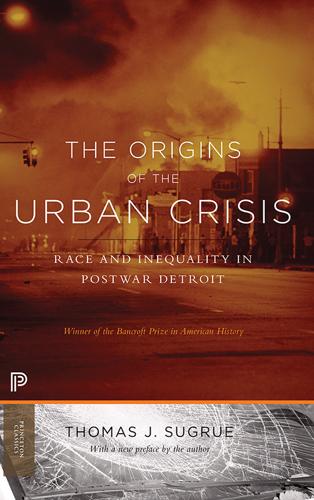
The Origins of the Urban Crisis
by
Sugrue, Thomas J.
The leadership of the UAW also made a tremendous push for inclusion of blacks in the workplace during World War II, despite opposition from rank-and-file workers and corporate managers.22 Auto employers had most frequently used black labor as part of a classic divide-and-conquer strategy in the workplace: in times of industrial tumult, the auto companies hired blacks as strikebreakers. The pattern broke in the early 1940s, when the UAW forged an alliance with black churches and reform organizations, especially the NAACP23 The success of interracial unionism in the automobile industry hindered employers’ strategies of fragmenting the work force by race to curb union militancy.
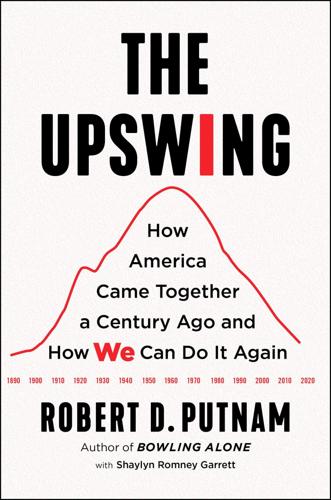
The Upswing: How America Came Together a Century Ago and How We Can Do It Again
by
Robert D. Putnam
Published 12 Oct 2020
Unionism in the nineteenth century had encountered widespread worker resistance embedded in the traditional ideal of the individual craftsman reluctant to sacrifice his independence and his status as a skilled worker on behalf of workers on the far side of historic occupational and ethnic or racial cleavages. Why should a Polish locomotive engineer put his livelihood at risk to benefit a black or Chinese gandy dancer merely because they both happened to work for the same large corporation? Labor agitation inevitably involves a dilemma of collective action, tempting some workers (strikebreakers or “scabs”) to defect from the union side. That temptation was especially great for African Americans and other ethnic minorities excluded from unions by white prejudice. Thus, successful unionization inherently involves remolding identities. Only intensive efforts by union organizers to build solidarity among all workers could hope to overcome that dilemma.
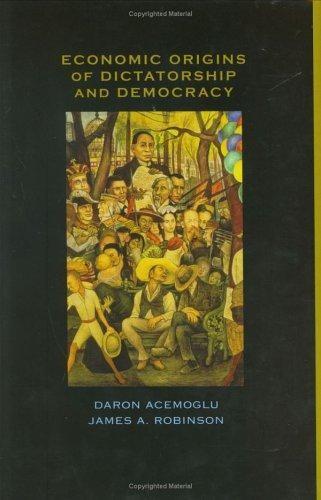
Economic Origins of Dictatorship and Democracy
by
Daron Acemoğlu
and
James A. Robinson
Published 28 Sep 2001
Yet, it is clear that Chávez did not make any concessions until these threats actually manifested in strikes and demonstrations. Generally, it will be unclear whether threats to organize strikes are credible because the actions of many people have to be coordinated and a strike may fail because the regime can organize strikebreaking activities. Even after a strike or demonstration has occurred, there is no guarantee that another one can be easily orchestrated in the future. These factors indicate why the opponents of Chávez were not content with policy concessions because they anticipate that they can be reversed. They would only be satisfied with the removal of the president and, thus, a change in the allocation of de jure power.

Power and Progress: Our Thousand-Year Struggle Over Technology and Prosperity
by
Daron Acemoglu
and
Simon Johnson
Published 15 May 2023
When workers organized to ask for higher wages or better working conditions, they were often harshly suppressed, including in the Great Railroad strike of 1877, the Great Southwest Railroad strike of 1886, the Carnegie Steel strike of 1892, the 1894 Pullman strike, and the coal strike of 1902. In the 1913‒1914 United Mine Workers strike at the Colorado Fuel and Iron Company, controlled by Rockefeller, the altercations between strikers and mine guards, troops, and strikebreakers hired by the company escalated and led to the deaths of twenty-one people, including women and children. The United States today would be a very different place if the economic and social conditions of the Gilded Age had endured. But a broad Progressive movement formed to oppose the trusts’ power and demand institutional change.

Slouching Towards Utopia: An Economic History of the Twentieth Century
by
J. Bradford Delong
Published 6 Apr 2020
On May 1, 1886, the American Federation of Labor declared a general strike to fight for an eight-hour workday. A front line of that conflict formed at the gates of the McCormick Harvesting Machine Company in Chicago. There, hundreds of police, backed up by private Pinkerton agency security guards, protected hundreds of strikebreakers who passed an angry crowd. On May 3, police officers opened fire on the crowd, killing six. The next day in Haymarket Square eight police officers were murdered by an anarchist bomb during a rally in protest of police violence and in support of the striking workers. The police opened fire and killed perhaps twenty civilians (nobody seems to have counted), largely immigrants, largely non-English-speaking ones.
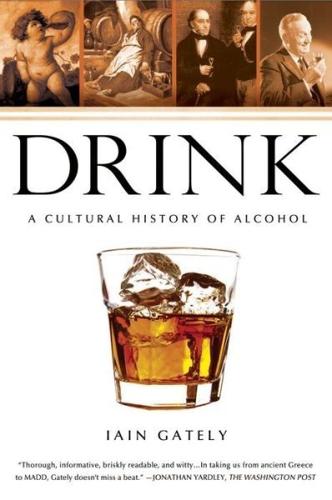
Drink: A Cultural History of Alcohol
by
Iain Gately
Published 30 Jun 2008
Prohibition was perceived as discriminatory against urban and factory workers, who had drunk beer in saloons rather than cocktails and so had suffered more than the rich, whose tastes in drinks were better catered to by bootleggers. The workers not only had to endure thirst but also violence as a result of Prohibition. Organized crime, flush with money from selling alcohol, moved into the strike-breaking business. Union leaders were murdered and workforces cowed by gangsters hired by unscrupulous industrialists. This unintended consequence of the great moral experiment sickened many Americans, as did the never-ending casualty register caused by toxic bootleg. In 1930, America suffered the worst outbreak of mass poisoningit had yet experienced, which crippled perhaps fifty thousand people for life.
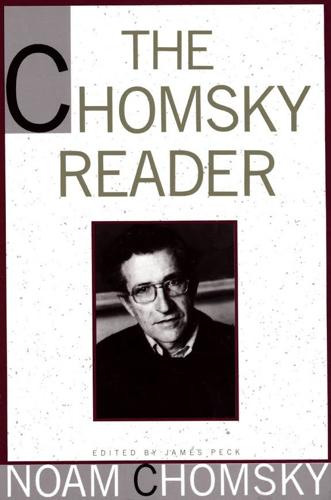
The Chomsky Reader
by
Noam Chomsky
Published 11 Sep 1987
NC: Well, maybe part of the reason is that in a certain sense I grew up in an alien culture, in the Jewish-Zionist cultural tradition, in an immigrant community in a sense, though of course others reacted to the same conditions quite differently. I suppose I am also a child of the Depression. Some of my earliest memories, which are very vivid, are of people selling rags at our door, of violent police strikebreaking, and other Depression scenes. Whatever the reason may be, I was very much affected by events of the 1930s, the Spanish Civil War, for example, though I was barely literate. The first article I wrote was an editorial in the school newspaper on the fall of Barcelona, a few weeks after my tenth birthday.
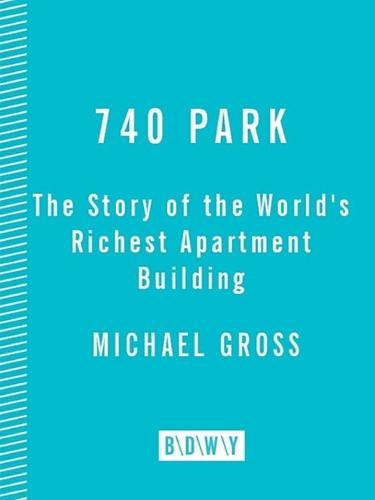
740 Park: The Story of the World's Richest Apartment Building
by
Michael Gross
Published 18 Dec 2007
When its workers went on strike in September 1913, seeking union recognition, Junior held out for an open shop, telling a CF&I official he was fighting “a good fight.” The following April, striking workers at the company’s mine at Ludlow were evicted from their company-owned homes and attacked in their tent colony by an overwhelming force of state militiamen, company guards, private detectives, and strikebreaking goons who shot and burned to death twenty people, thirteen of them women and children. It became known as the Ludlow Massacre. Junior at first dismissed the debacle as an “outbreak of lawlessness,” but after the socialist writer Upton Sinclair penned an open letter calling him a murderer, picket lines formed outside his office and the thirty-three-hundred-acre family compound at Pocantico, and a bomb meant for 10 West Fifty-fourth Street exploded before it got there, killing several people.
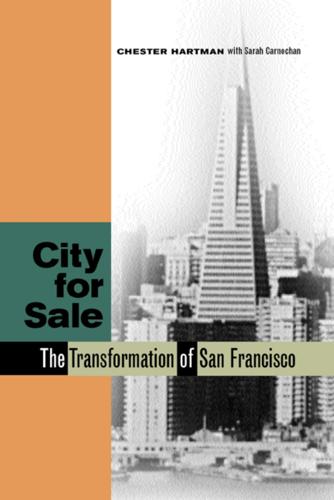
City for Sale: The Transformation of San Francisco
by
Chester W. Hartman
and
Sarah Carnochan
Published 15 Feb 2002
John Elberling, later to become head of TOOR’s housing development group, provided this vignette: “Before he died in 1988, Peter Mendelsohn showed me TOOR’s letter to Harry Bridges appealing for help to stop Redevelopment’s demolition. . . . ‘We are your Brothers,’ they wrote. ‘We fought the bosses together. We stood with you against the police and strikebreakers on the Embarcadero during the General Strike. We sailed with you in the Merchant Marine during the War. The Redevelopment Agency is taking our homes. It’s all we have. We need your help.’ Bridges had returned the original letter, with a handwritten answer in the margin, ‘Sorry, but I’m on the other side [in] this, Harry.’
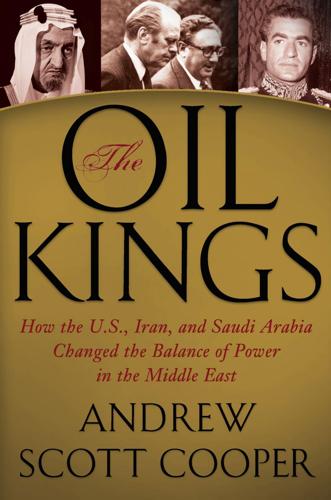
The Oil Kings: How the U.S., Iran, and Saudi Arabia Changed the Balance of Power in the Middle East
by
Andrew Scott Cooper
Published 8 Aug 2011
Police reported a rash of suspicious automobile fires as car owners found ingenious ways of disposing of their gas guzzlers and claiming the insurance value on their cars. Motorists in Hawaii slept outside gas stations to hold their place in line. A strike by independent truck drivers angry over fuel prices and scarcity led to food shortages, which in turn triggered panic buying at supermarkets in the Midwest. Bitter clashes with strikebreakers resulted in three shooting deaths and many injuries, “and there have been scores of fist fights, slashed tires and smashed windshields.” Truckers besieged the town of Streator (pop. 16,000) in Illinois and prevented trucks from entering the city limits. The town’s biggest employer was forced to close its doors and frenzied residents mobbed stores to stock up on provisions.
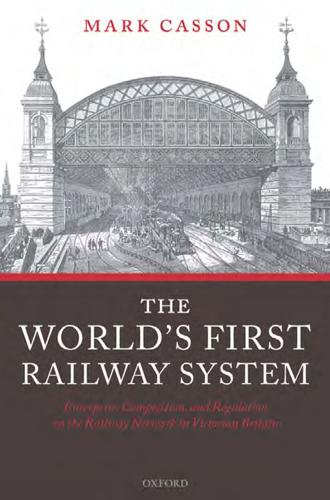
The World's First Railway System: Enterprise, Competition, and Regulation on the Railway Network in Victorian Britain
by
Mark Casson
Published 14 Jul 2009
In manufacturing, mining, and transport, wage rates rose, basic hours of work fell, and productivity growth stagnated (Broadberry 1997, 2006). Labour disputes began to polarize political opinion. Some employers turned to confrontation, locking workers out before a strike could take effect, and hiring strike-breakers, while others agreed to conciliation. Some embraced novel forms of profit-sharing and part-ownership with employees, while others emphatically asserted their absolute rights as employers. Government began to legislate over worker’s rights and trade union representation, leading to high-profile court cases which resolved the immediate issues but often left more ill-feeling between the parties than there had been before.
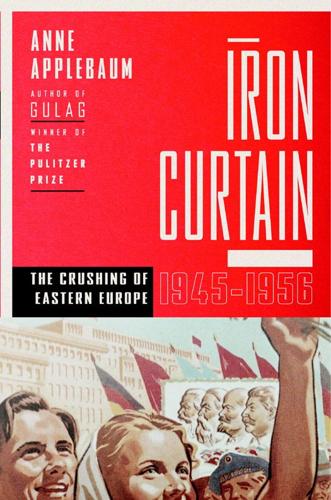
Iron Curtain: The Crushing of Eastern Europe, 1945-1956
by
Anne Applebaum
Published 30 Oct 2012
In the first wave he banned, among others, the Hungarian Athletic Club (described by Szabad Nép as “the exclusive sports association of the highest, sharply antidemocratic circles”); the Prohaszka Work Community, a community service organization of Bishop Prohaszka; the Association of College Students; several Christian Democratic trade unions (“which made themselves known for their strike-breaking activities in the past”); and something called the Grand Order of Emericana, which was said to hold mystical ceremonies in the manner of the Ku Klux Klan. In the next wave Rajk banned the Hungarian Naval Association, a few local hunting clubs, the Count Széchenyi Association of War Veterans, and the Association of Christian Democratic Tobacco Workers.
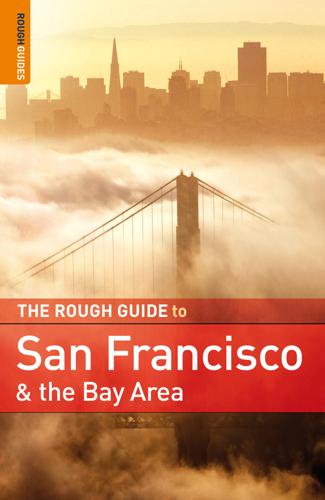
Rough Guide to San Francisco and the Bay Area
by
Nick Edwards
and
Mark Ellwood
Published 2 Jan 2009
Giannini in North Beach – into the largest bank in the world. The buoyant 1920s gave way to the Depression of the 1930s, but, despite the sharp increases in unemployment, there was only one major battle on the industrial-relations front. On “Bloody Thursday” – July 5, 1934 – police protecting strike-breakers from angry picketers fired into the crowd, wounding thirty and killing two longshoremen. The Army was sent in to restore order, and in retaliation the unions called a General Strike that saw some 125,000 workers down tools, bringing the Bay Area economy to a halt for four days. It was one of the largest strikes in the nation’s history.
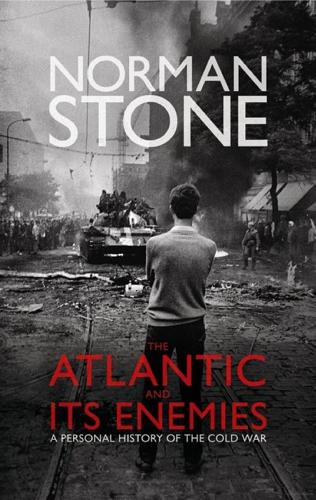
The Atlantic and Its Enemies: A History of the Cold War
by
Norman Stone
Published 15 Feb 2010
In 1906 a Liberal government anxious to please labour produced a trade union law that assumed common decency. The matter was not even debated, so that the then worthies could devote their oratorical talents to the Irish Question. The trade unions’ power to ‘picket’, i.e. to deter potential customers and strike-breakers, was unchallenged. That power was not supposed to include violence, but there was nothing to prevent strike pickets from roving around to stop firms that were indirectly involved in the affairs of the struck-against one. A would-be mining revolutionary, Arthur Scargill, sent men with brickbats to raid the power stations and stop the use of coal, and the police stood by, helpless.
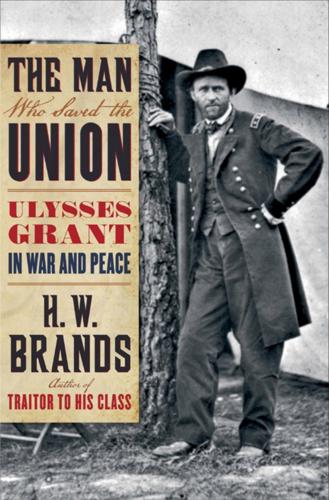
The Man Who Saved the Union: Ulysses Grant in War and Peace
by
H. W. Brands
Published 1 Oct 2012
The Emancipation Proclamation, by converting the struggle to preserve the Union into a crusade to free the slaves, antagonized many New Yorkers, especially Irish immigrants who feared a flood of low-wage labor that would render their currently tenuous position even more so. The deployment of black strikebreakers against Irish dockworkers in a strike in the early summer of 1863 intensified the fear and distrust. More immediately threatening than the Emancipation Proclamation was the Enrollment Act of March 1863. The measure aimed to induce voluntary enlistment but did so by requiring compulsory enlistment—a draft—if congressional districts didn’t achieve their quotas.
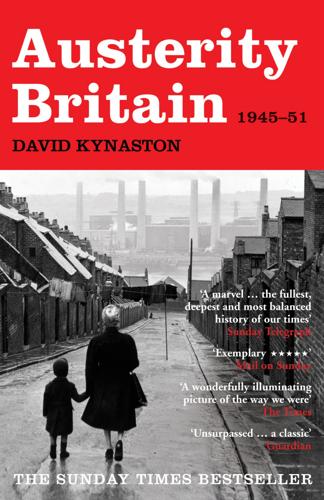
Austerity Britain: 1945-51
by
David Kynaston
Published 12 May 2008
Not only were there major, high-profile strikes in 1948 and 1949 (in both cases centred on London and Liverpool), but between 1945 and 1951 as a whole, more than a fifth of the 14.3 million working days lost to strikes in all industries were attributable to industrial action in the docks – even though those docks employed only about 80,000 men out of a national workforce of some 20 million.7. ‘To some of us,’ a bishop living in Eastbourne wrote to The Times during the 1949 strike (ended only by the government’s resorting to no fewer than 15,000 servicemen to act as strike-breakers), ‘it is all so desperately puzzling.’ He went on: We are told that the majority of dockers are decent men, yet their reasoning powers seem paralysed. How can it be right to sacrifice England, to attempt to starve her, and to upset our already over-difficult national recovery by any sectional action?
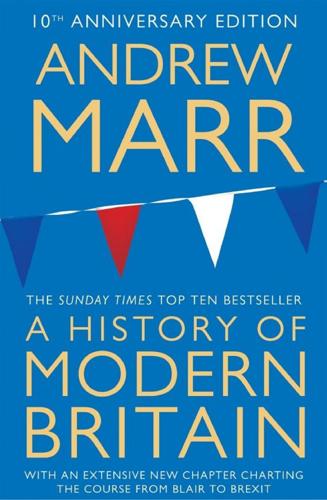
A History of Modern Britain
by
Andrew Marr
Published 2 Jul 2009
After many years of dithering, British Rail was broken up and privatized, as was the remaining coal industry. After the 1992 election it was decided that over half of the remaining coalmining jobs must go, in a closure programme of thirty-one pits to prepare the industry for privatization. This depressed or angered many Tory MPs who felt the strike-breaking effect of the Nottinghamshire-dominated Union of Democratic Mine-workers deserved a better reward, and it roused much public protest. Nevertheless, with power companies moving towards gas and oil, and the union muscle of the miners broken long since, the sale went ahead two years later. Faced with a plan by Michael Heseltine to sell off the Post Office too, Major baulked.

Behave: The Biology of Humans at Our Best and Worst
by
Robert M. Sapolsky
Published 1 May 2017
.* Similar “other-regarding preference” was shown with marmoset monkeys, where the first individual got nothing and merely chose whether the other guy got a cricket to eat (of note, a number of studies have failed to find other-regarding preference in chimps).16 Really interesting evidence for a nonhuman sense of justice comes in a small side study in a Brosnan/de Waal paper. Back to the two monkeys getting cucumbers for work. Suddenly one guy gets shifted to grapes. As we saw, the one still getting the cucumber refuses to work. Fascinatingly, the grape mogul often refuses as well. What is this? Solidarity? “I’m no strike-breaking scab”? Self-interest, but with an atypically long view about the possible consequences of the cucumber victim’s resentment? Scratch an altruistic capuchin and a hypocritical one bleeds? In other words, all the questions raised by human altruism. Given the relatively limited reasoning capacities of monkeys, these findings support the importance of social intuitionism.
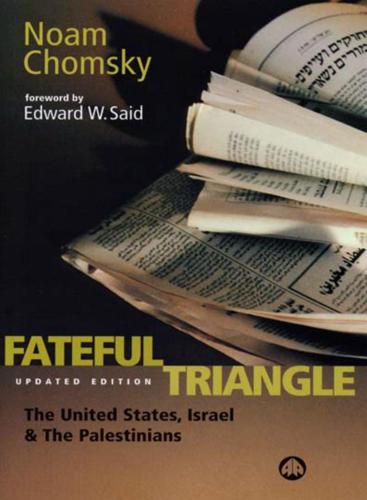
Fateful Triangle: The United States, Israel, and the Palestinians (Updated Edition) (South End Press Classics Series)
by
Noam Chomsky
Published 1 Apr 1999
The Labor Party was a party of Jewish workers (NB: not workers; in fact, it opposed efforts by the Mandatory government to improve the conditions of Arab workers* while urging a boycott of their labor and produce),189 while the Revisionists, the precursors of Begin’s Herut, were in fact an offshoot of European fascism, with an ideology of submission of the mass to a single leader, strike-breaking, chauvinist fanaticism, and the rest of the familiar paraphernalia of the 1930s.190 I 9.1 “The Boundaries of Zionist Aspirations” * Few leaders of the pre-state Labor Party were so concerned with justice for the Arabs as Chaim Arlosoroff, who was assassinated in 1933 (by Revisionists, Labor alleged).
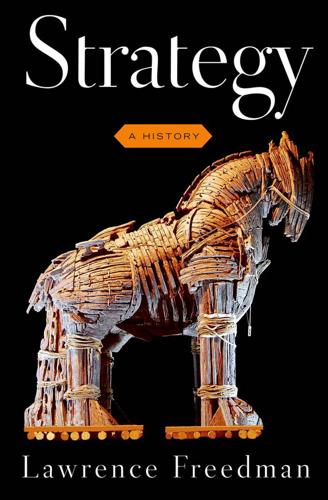
Strategy: A History
by
Lawrence Freedman
Published 31 Oct 2013
It was possible, he observed, to “follow a pig from the sty to the sausage and the can.” At the time of his visit the Amalgamated Meat Cutters and Butcher Workman’s Union were smarting after a defeat in a strike aimed at getting the stockyards unionized. Weber, apparently with a degree of exaggeration, described the aftermath: “Masses of Italians and Negroes as strike-breakers; daily shootings with dozens of dead on both sides; a streetcar was overturned and a dozen women were squashed because a non-union man had sat in it; dynamite threats against the Elevated Railway, and one of its cars was actually derailed and plunged into the river.”31 He also visited the Hull House Settlement, about which his wife Marianne wrote in glowing terms: “It includes a day nursery, accommodations for 30 women workers, a sports facility for young people, a large concert hall with a stage, an instructional kitchen, a kindergarten, rooms for all kinds of instruction in needlework and manual tasks, etc.

The House of Morgan: An American Banking Dynasty and the Rise of Modern Finance
by
Ron Chernow
Published 1 Jan 1990
By the fall of 1902, schools were shut in New York for lack of coal, and the Republicans feared retribution in the elections. On October 11, 1902, Elihu Root, the secretary of war, met with Pierpont aboard Corsair III in the Hudson River. Roosevelt was ready to run the mines with soldiers and wanted Morgan’s support for an arbitration committee. TR was taking an enlightened stand for a president—strikebreaking had been the more typical presidential response. The approach appealed to Morgan, who liked order and negotiation. He and Root went straight to the Union Club to meet with some railroad presidents. Paternalistic in his own bank, he was more conciliatory toward the miners than the railroad presidents were.
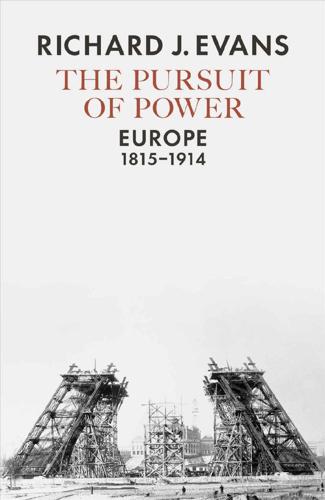
The Pursuit of Power: Europe, 1815-1914
by
Richard J. Evans
Published 31 Aug 2016
Most German employers insisted strongly on their right to take decisions about pay and conditions without consulting their employees. Even in 1910 or 1911, when the German mineworkers were at their strongest, only 40 per cent of miners in the Ruhr were members of any trade union. The movement was divided by the formation of Catholic and liberal trade unions to rival the dominant socialist ones, and, as also in France, strike-breakers countered the trade union movement by forming ‘yellow’ unions of their own, paid by the employers. The weakness and fragmentation of the unions in France, and the repeated failure of strike movements to gain their limited and practical ends, prompted a small revolutionary minority to embrace the radical principle of anarcho-syndicalism.
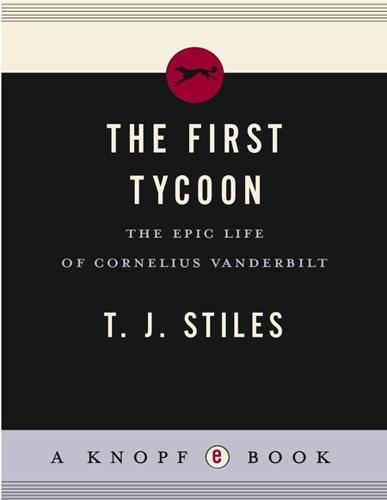
The First Tycoon
by
T.J. Stiles
Published 14 Aug 2009
A labor movement emerged, mirroring the rise of the large business enterprise.61 The Commodore had never experienced such an existence as that faced by his employees. Even his relationship with Thomas Gibbons was more one of sponsorship than mere employment. From his perspective, labor represented a cost. His son William managed the workers under strict instructions to economize, even to the extent of hiring strike-breaking drivers. The fluent and sensible “spokesloon” for the strikers may not have appreciated it very much, but William carried out his task so well that the Harlem finally would pay a 4 percent dividend ($2 per share) in June.62 Wall Street and the railroad industry greeted the dividend with disbelief.

The Rough Guide to New Zealand: Travel Guide eBook
by
Rough Guides
Published 1 Jan 2024
As workers opposed to the arbitration system withdrew their labour, owners organized scab labour, while the hostile Farmers’ Union recruited mounted “special constables” to help the government. Protected by naval and military forces, they decisively smashed the Red Feds. The Prime Minister even handed out medals to strike-breaking dairy farmers. Accidental suffrage In 1893, New Zealand became the first nation on earth to grant women the vote. Other territories (South Australia, Wyoming etc) had led the way with limited women’s suffrage, but New Zealand threw the net wider. It is something New Zealanders are inordinately proud of even though it came about more by accident than any free-thinking principle.
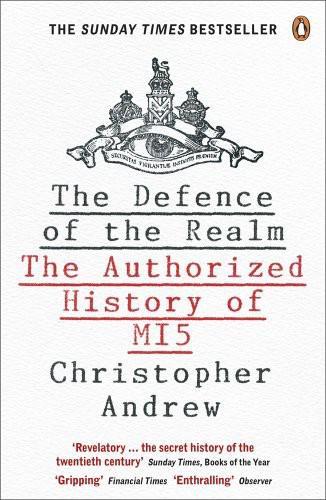
The Defence of the Realm
by
Christopher Andrew
Published 2 Aug 2010
Foot (eds), The Oxford Companion to the Second World War (Oxford: Oxford University Press, 1995) Heller, Joseph, ‘Failure of a Mission: Bernadotte and Palestine, 1948’, Journal of Contemporary History, vol. 14, no. 3 (1979) Hennessy, Peter, Never Again: Britain 1945–1951, paperback edn (London: Vintage, 1993) Hennessy, Peter, The Prime Minister: The Office and its Holders since 1945, revised paperback edn (London: Penguin Books, 2001) Hennessy, Peter, The Secret State: Whitehall and the Cold War (London: Allen Lane, The Penguin Press, 2002) Hennessy, Peter, Having It So Good: Britain in the Fifties (London: Allen Lane, The Penguin Press, 2006) Hennessy, Peter, Cabinets and the Bomb (London: British Academy, 2007) Hennessy, Peter (ed.), The New Protective State: Government, Intelligence and Terrorism (London: Continuum, 2007) Hennessy, Peter and Brownfeld, Gail, ‘Britain’s Cold War Security Purge: The Origins of Positive Vetting’, Historical Journal, vol. 25, no. 4 (1982) Hennessy, Peter and Jeffery, Keith, States of Emergency: British Governments and Strikebreaking (London: Routledge & Kegan Paul, 1983) Heussler, Robert, Completing a Stewardship: The Malayan Civil Service (London: Greenwood, 1983) Hewitt, Steve, Spying 101: The RCMP’s Secret Activities at Canadian Universities (Toronto: University of Toronto Press, 2002) Hiley, Nicholas, ‘The Failure of British Counter-Espionage against Germany 1907–1914’, Historical Journal, vol. 28, no. 4 (1985) Hiley, Nicholas, ‘British Internal Security in Wartime: The Rise and Fall of P.M.S.2, 1915–17’, Intelligence and National Security, vol. 1, no. 3 (1986) Hiley, Nicholas, ‘Counter-Espionage and Security in Great Britain during the First World War’, English Historical Review, vol. 101 (1986) Hiley, Nicholas, Introduction to William Le Queux, Spies of the Kaiser: Plotting the Downfall of England (London: Frank Cass, 1996) Hiley, Nicholas, ‘Entering the Lists: MI5’s Great Spy Round-up of August 1914’, Intelligence and National Security, vol. 21, no. 1 (2006) Hinsley, F.